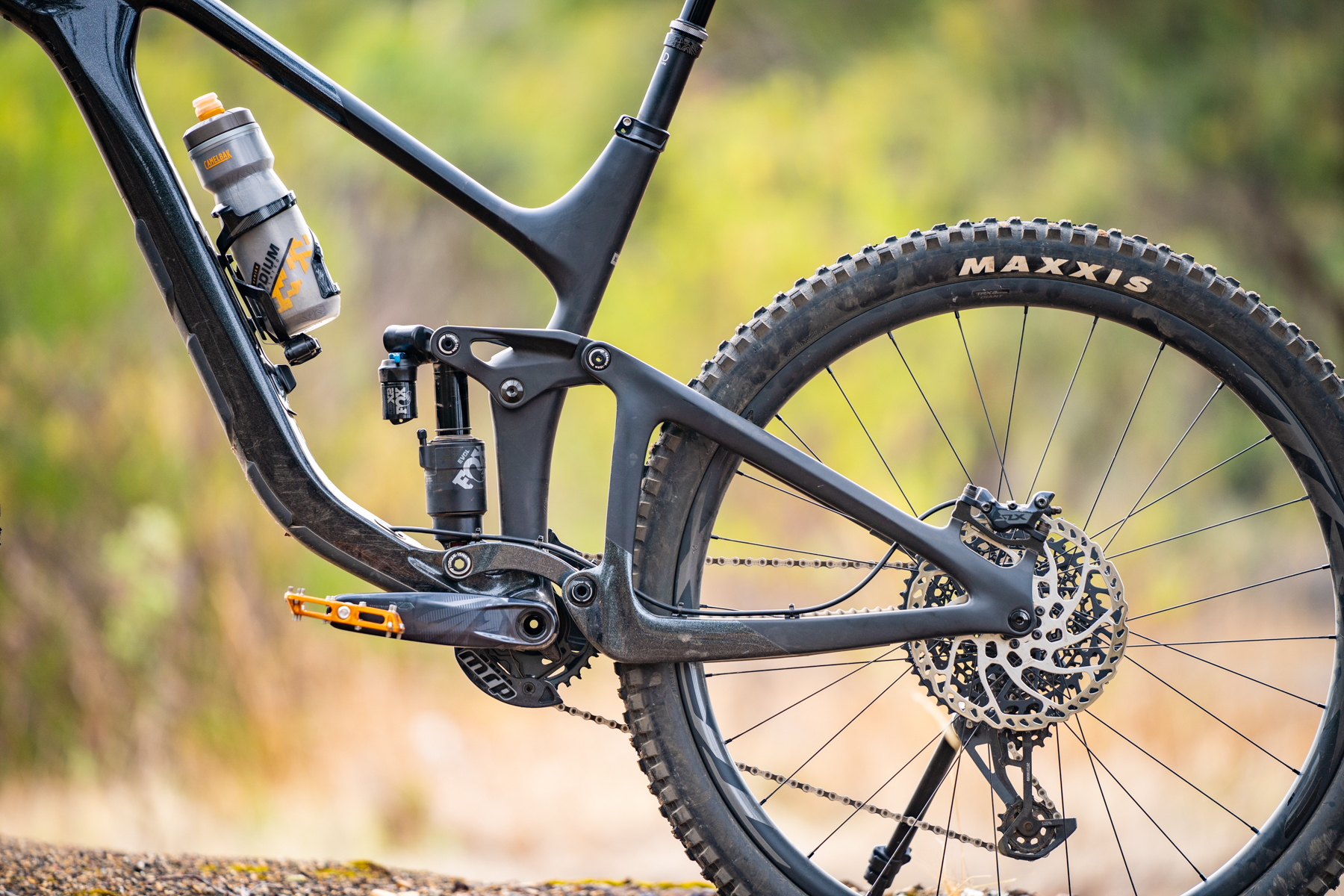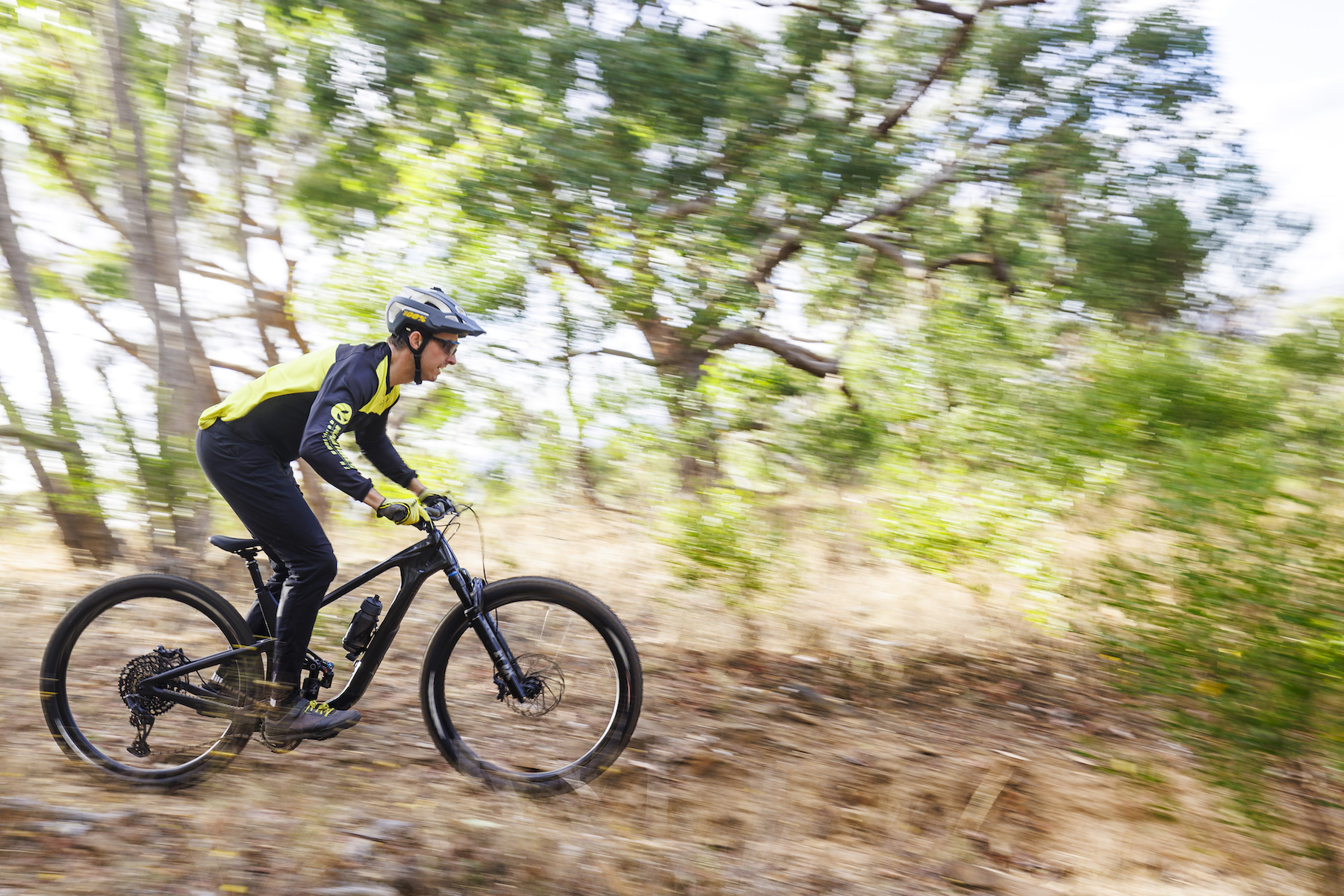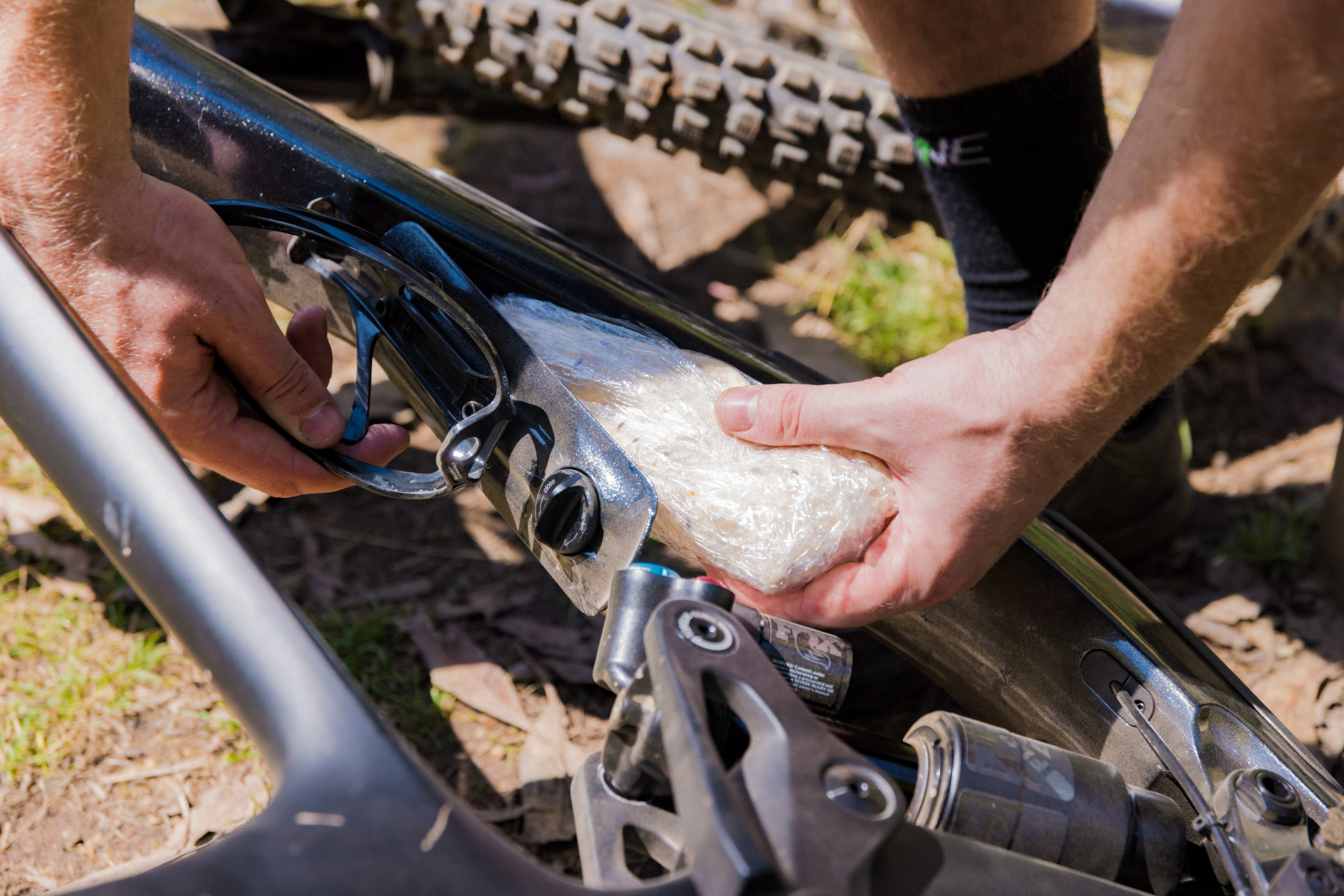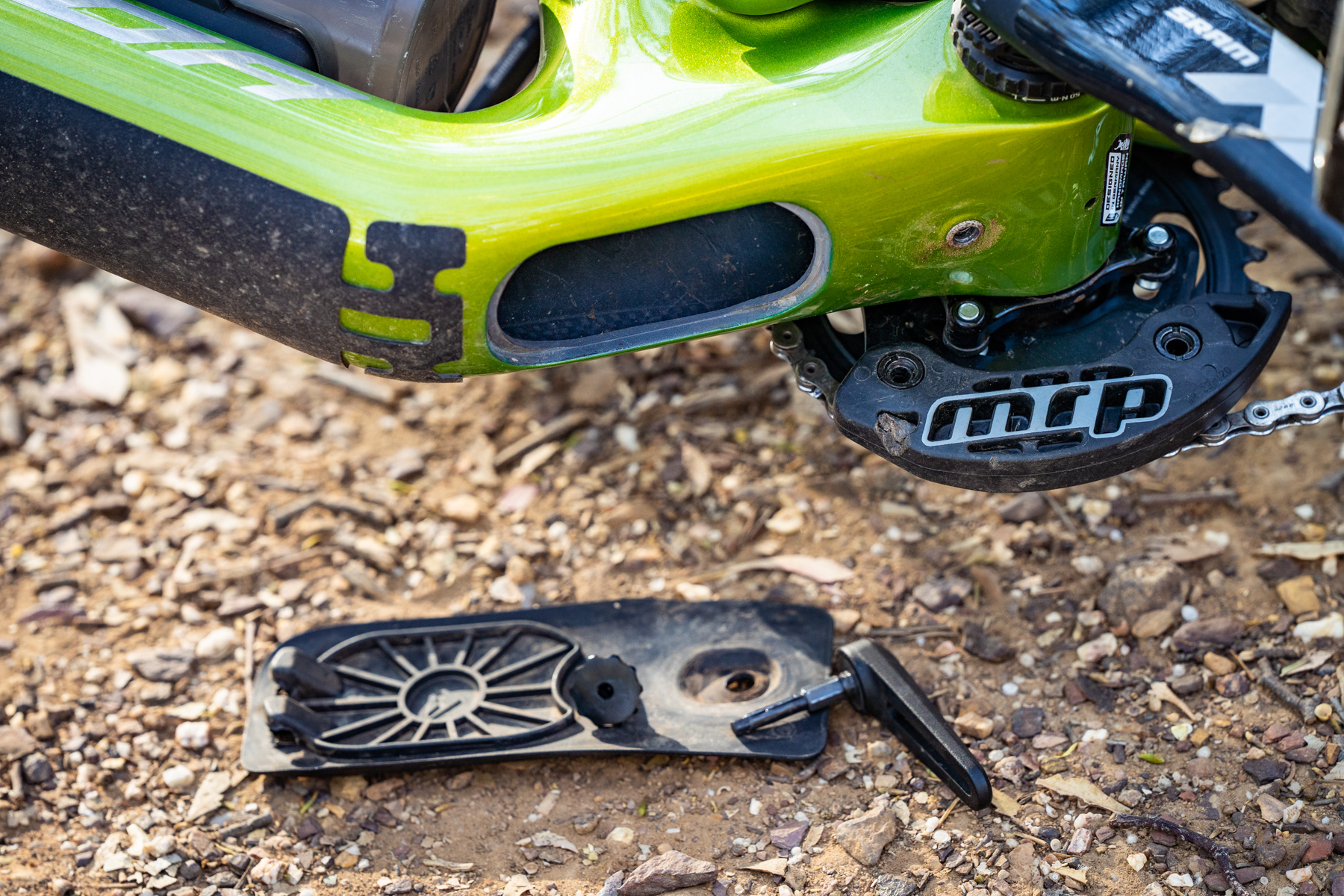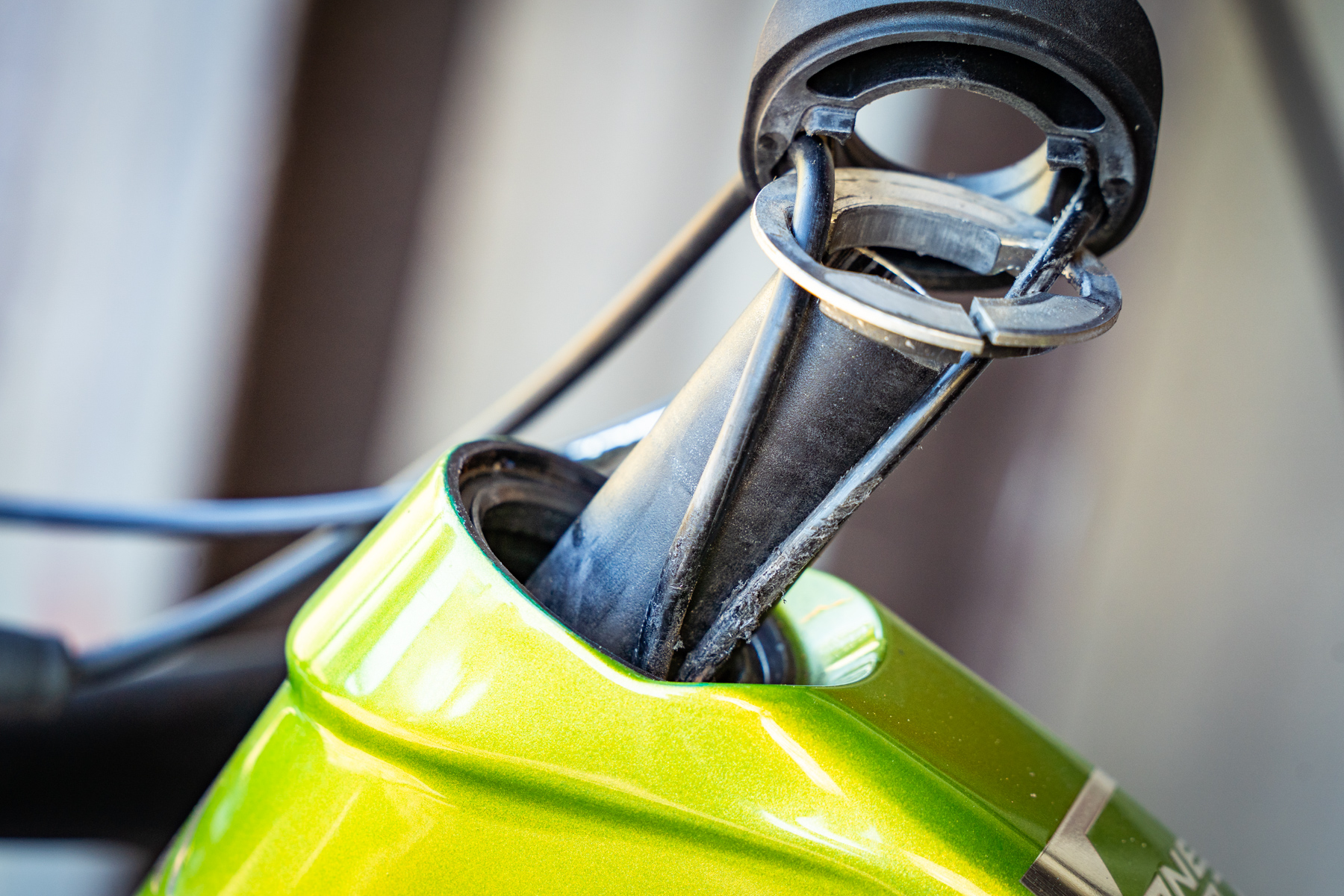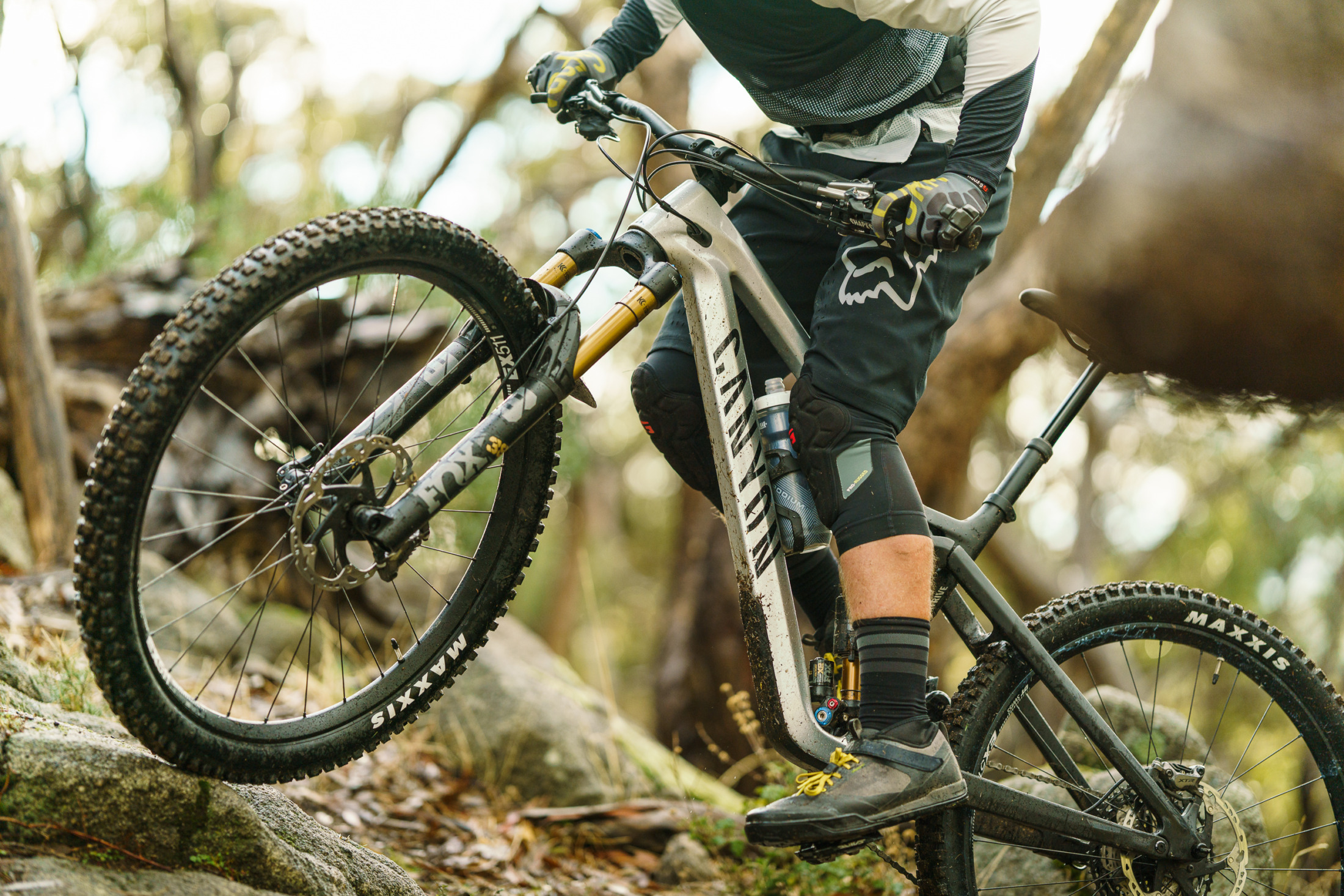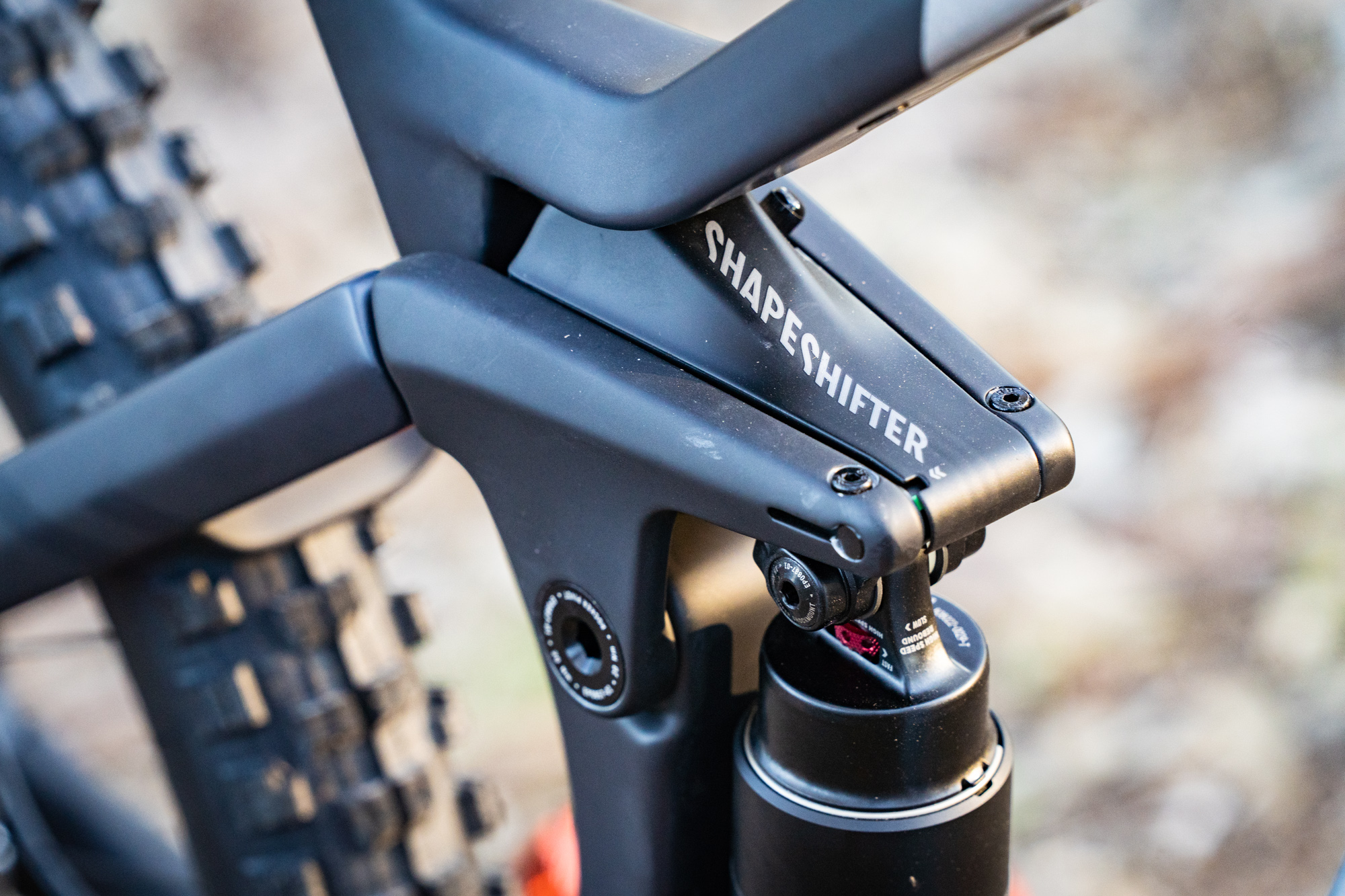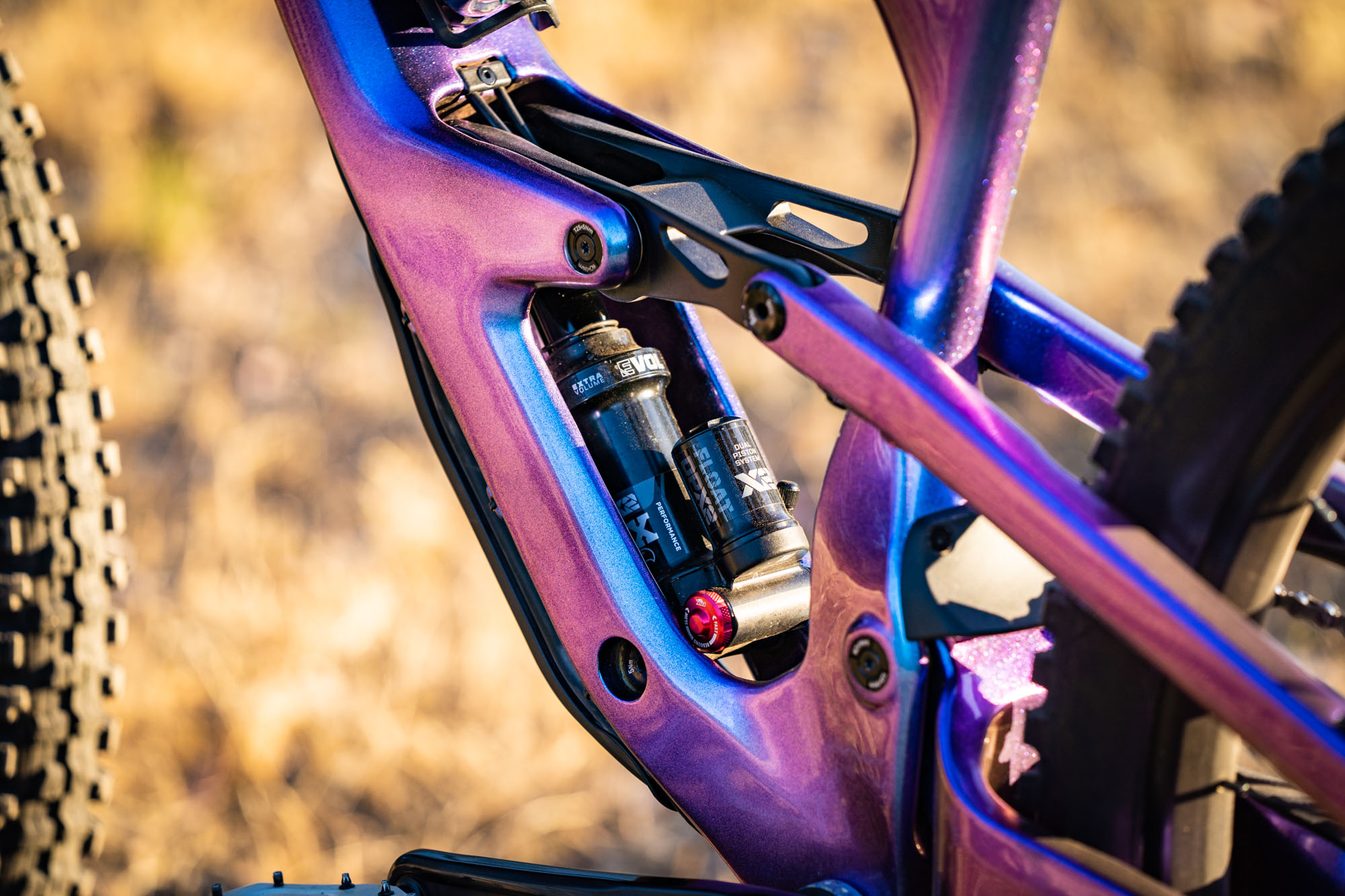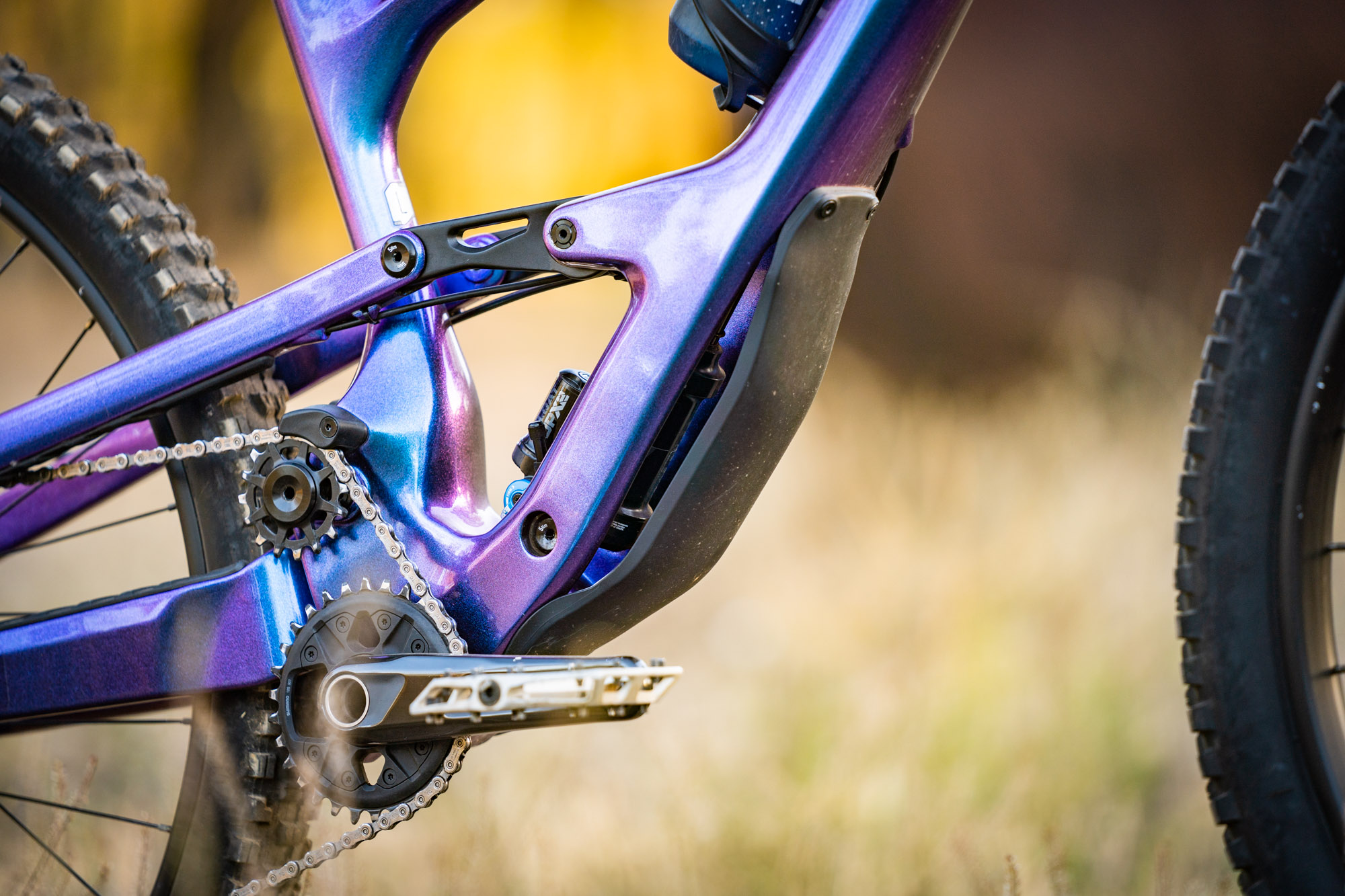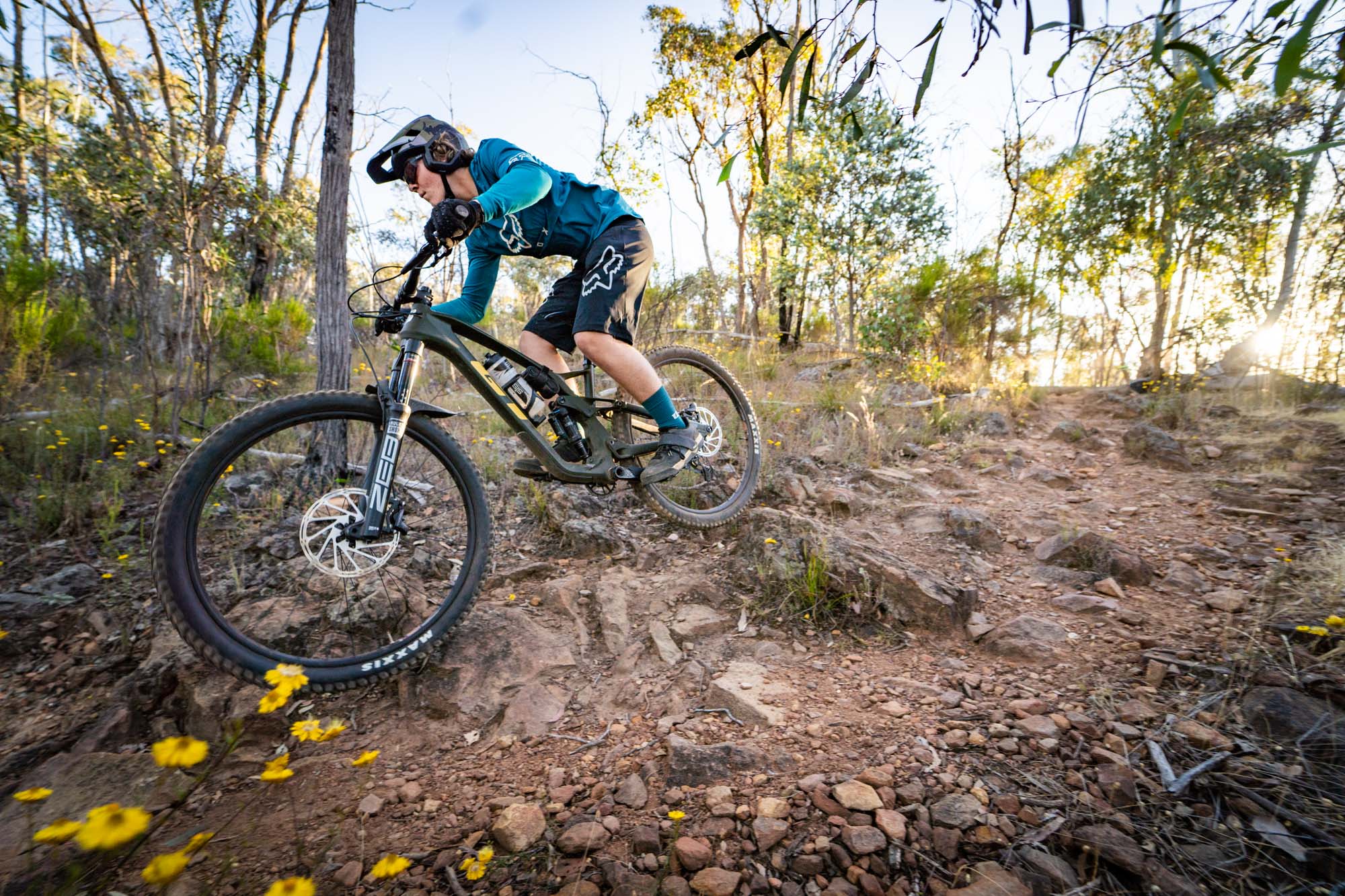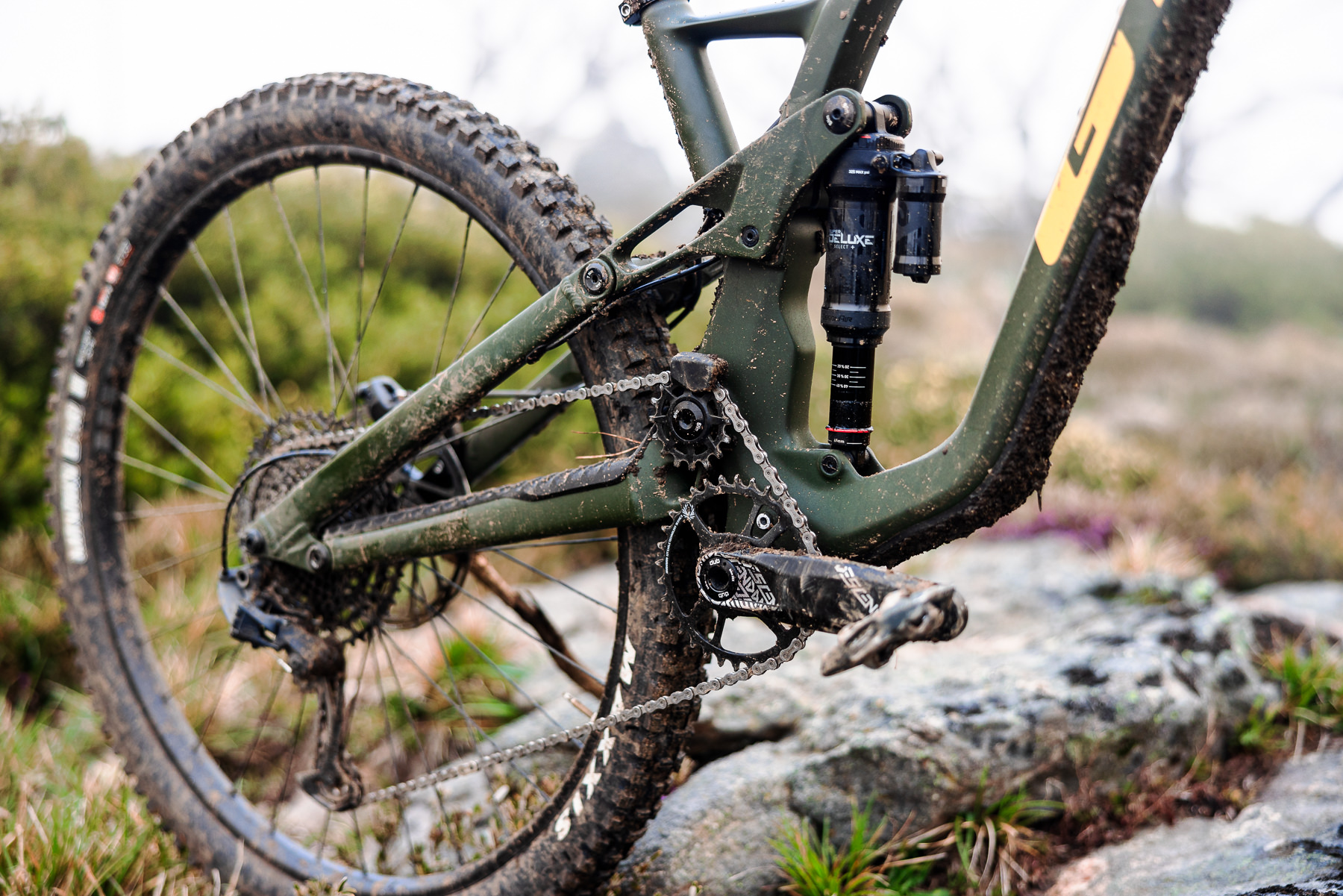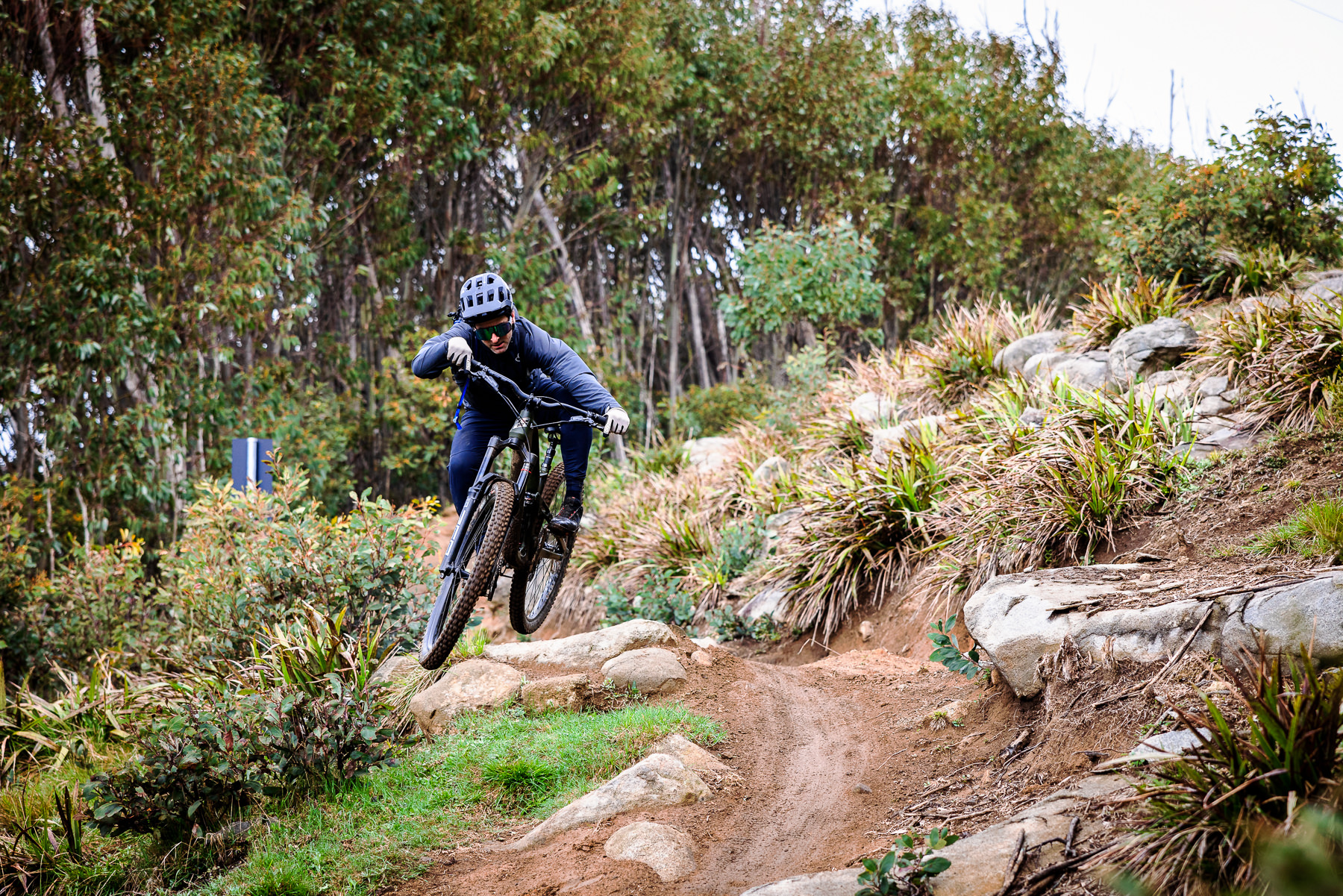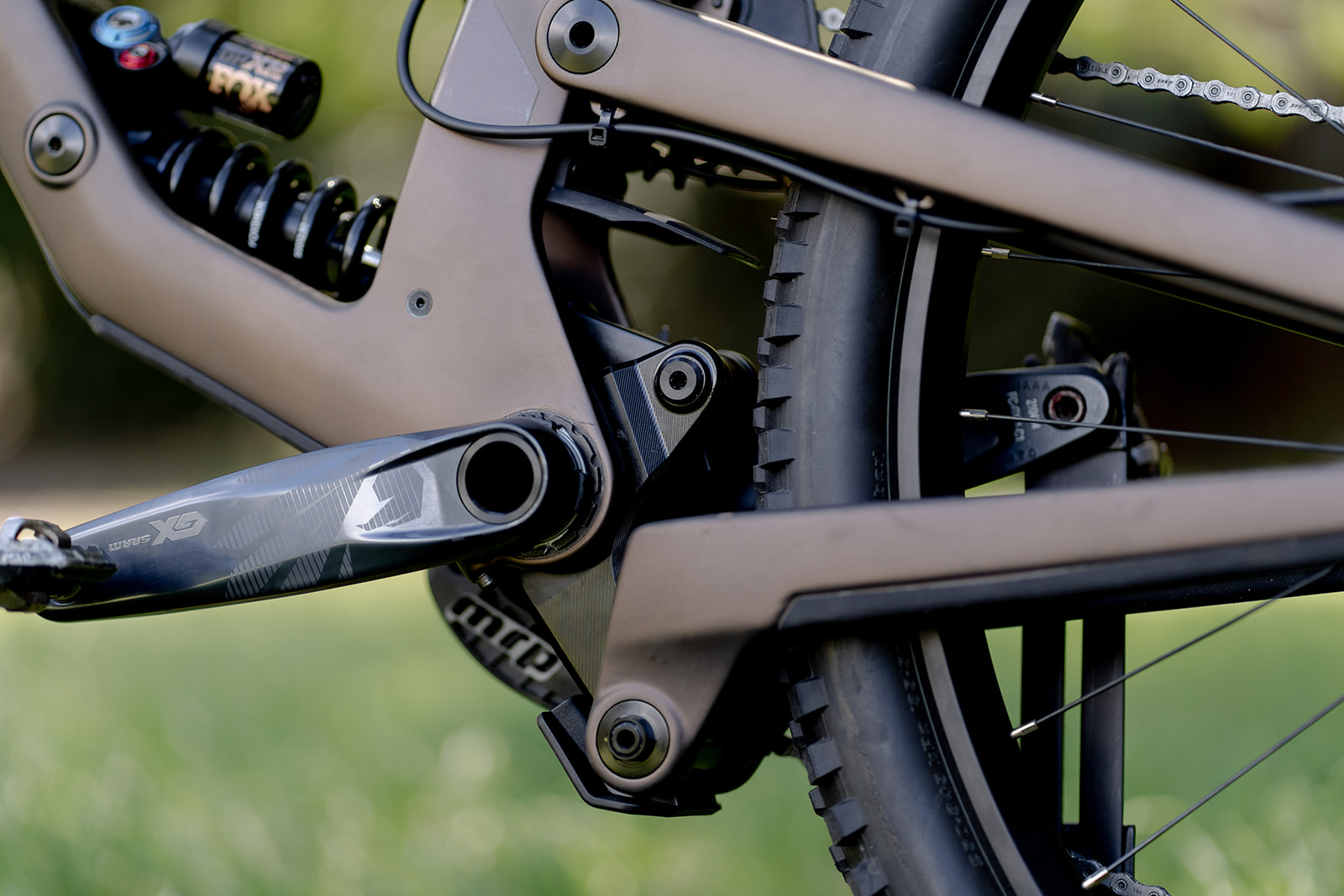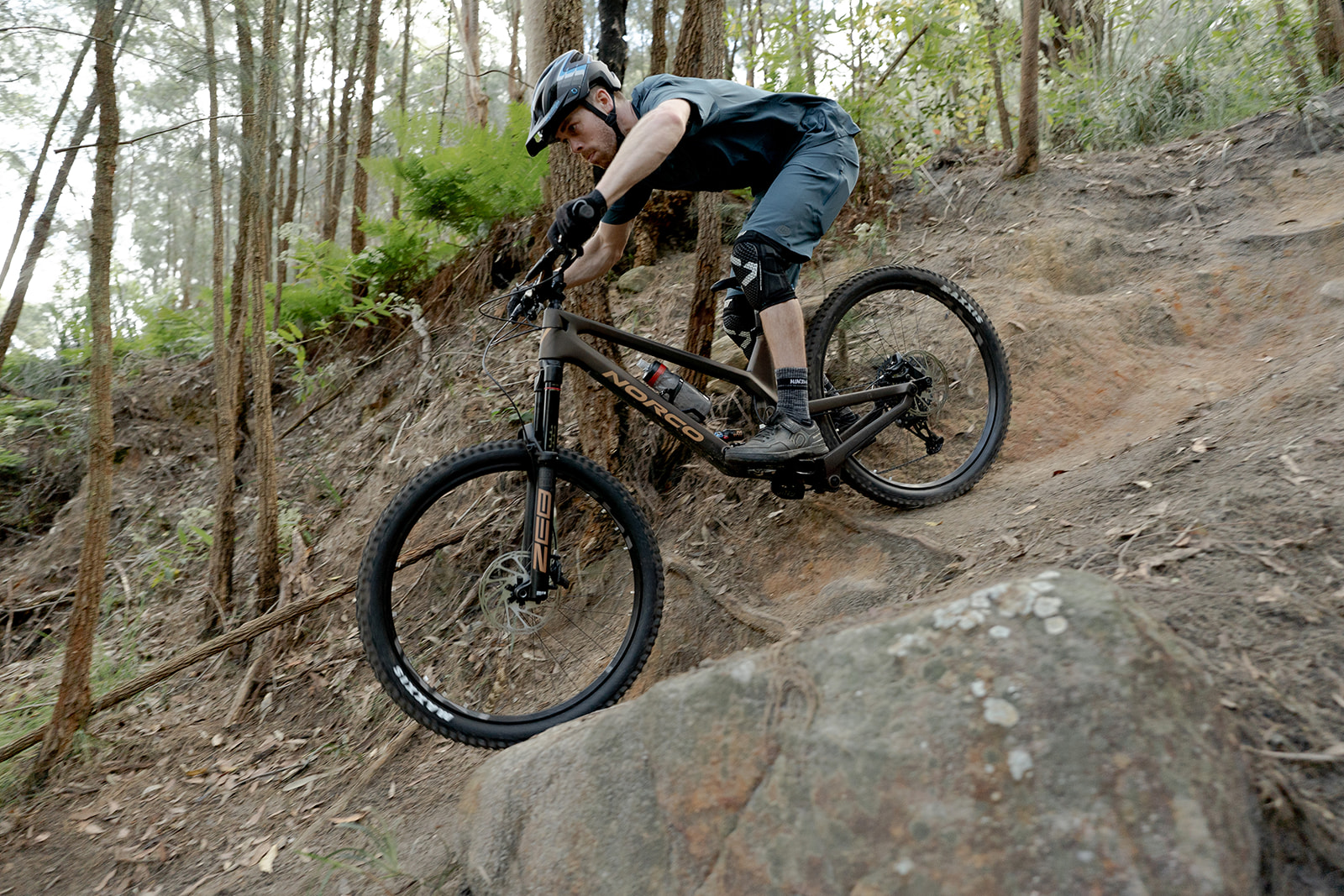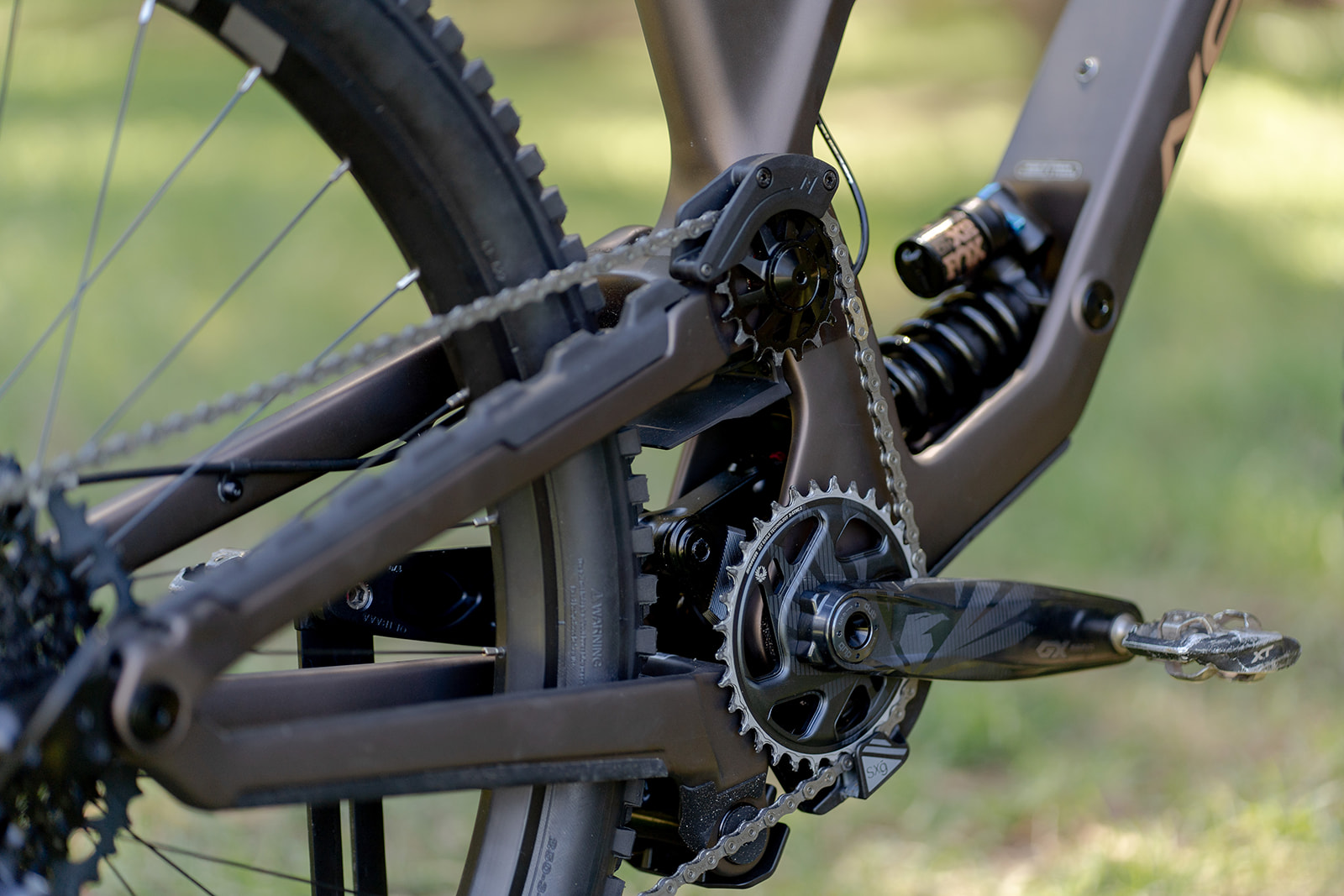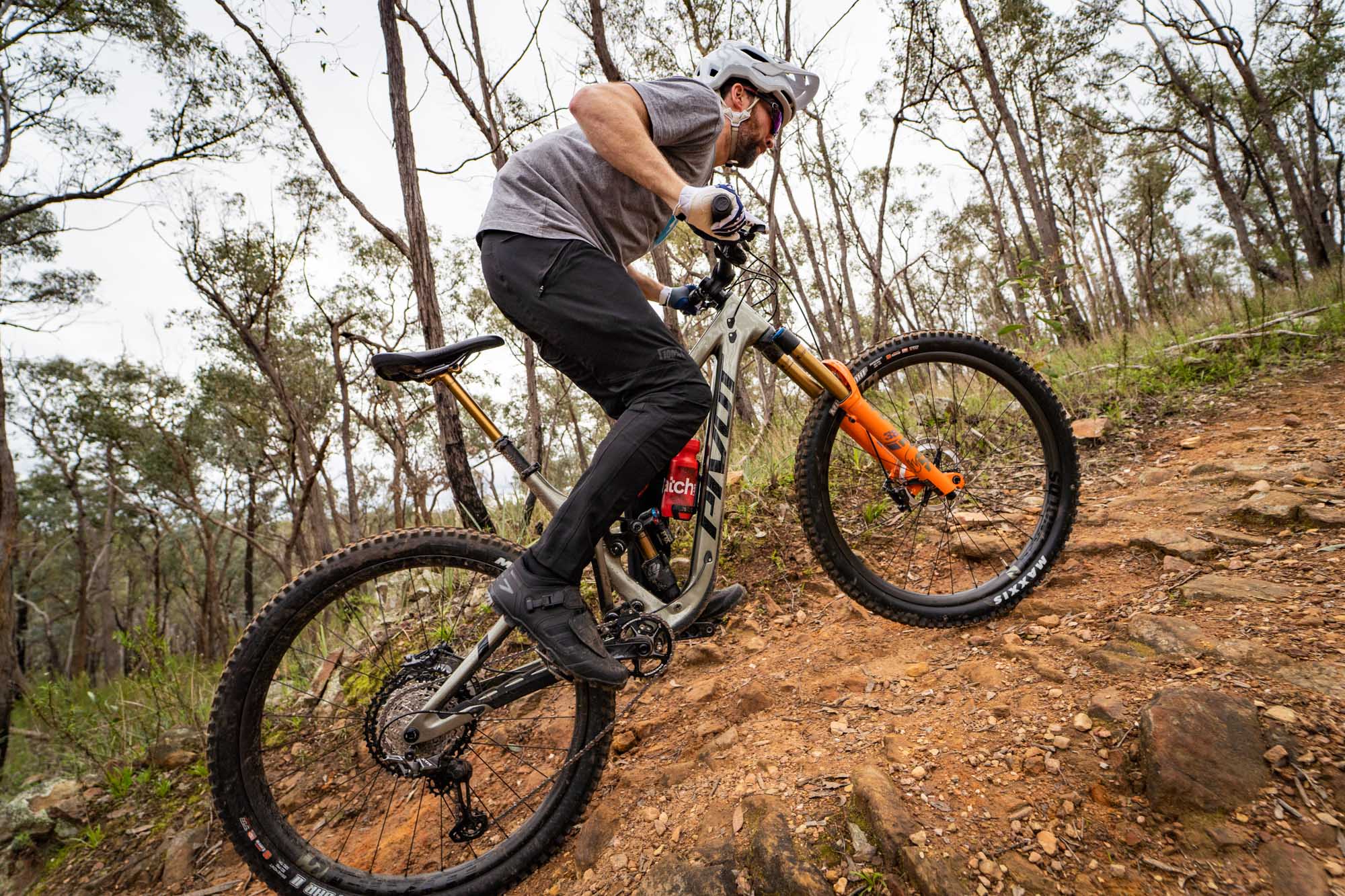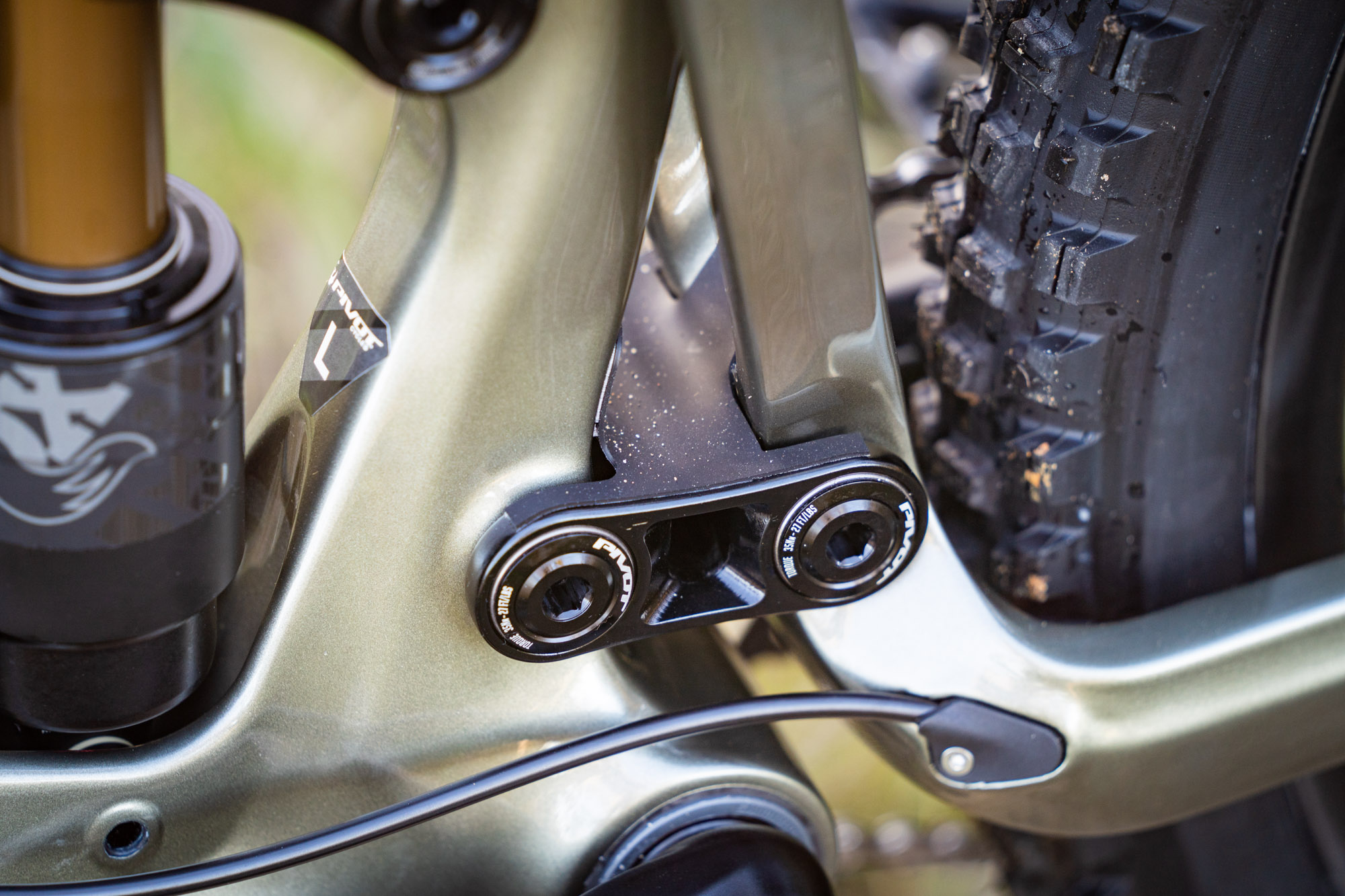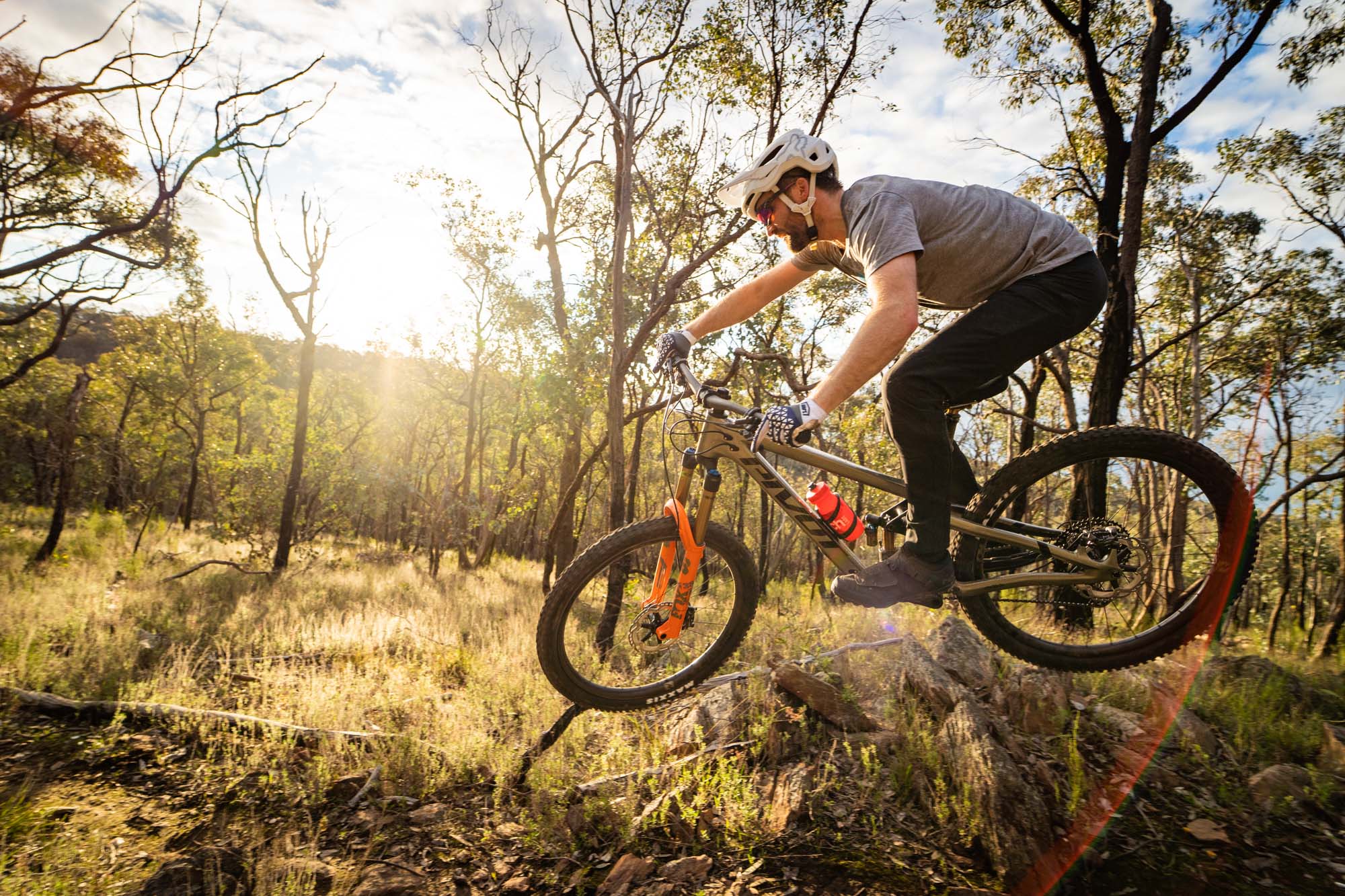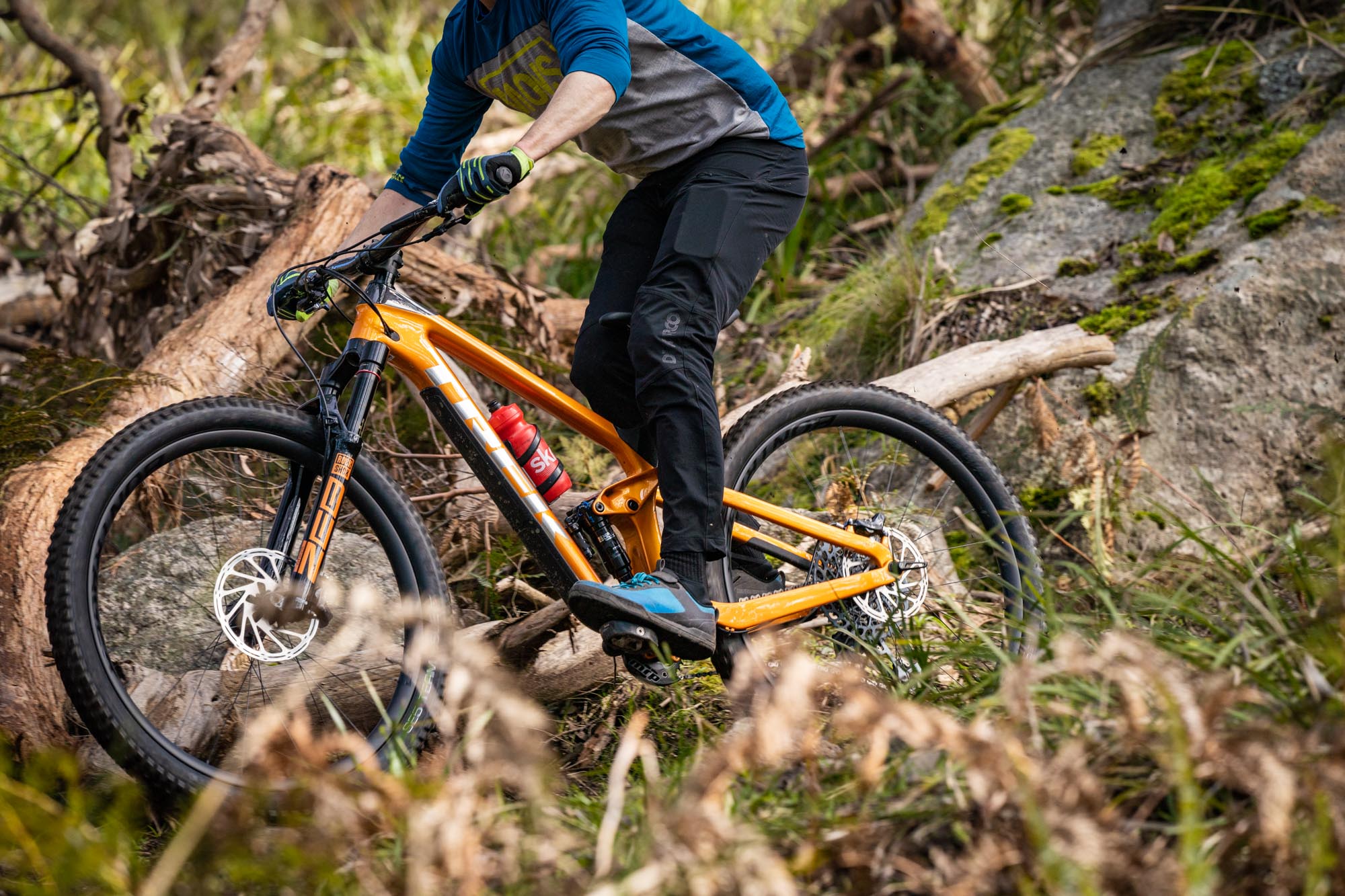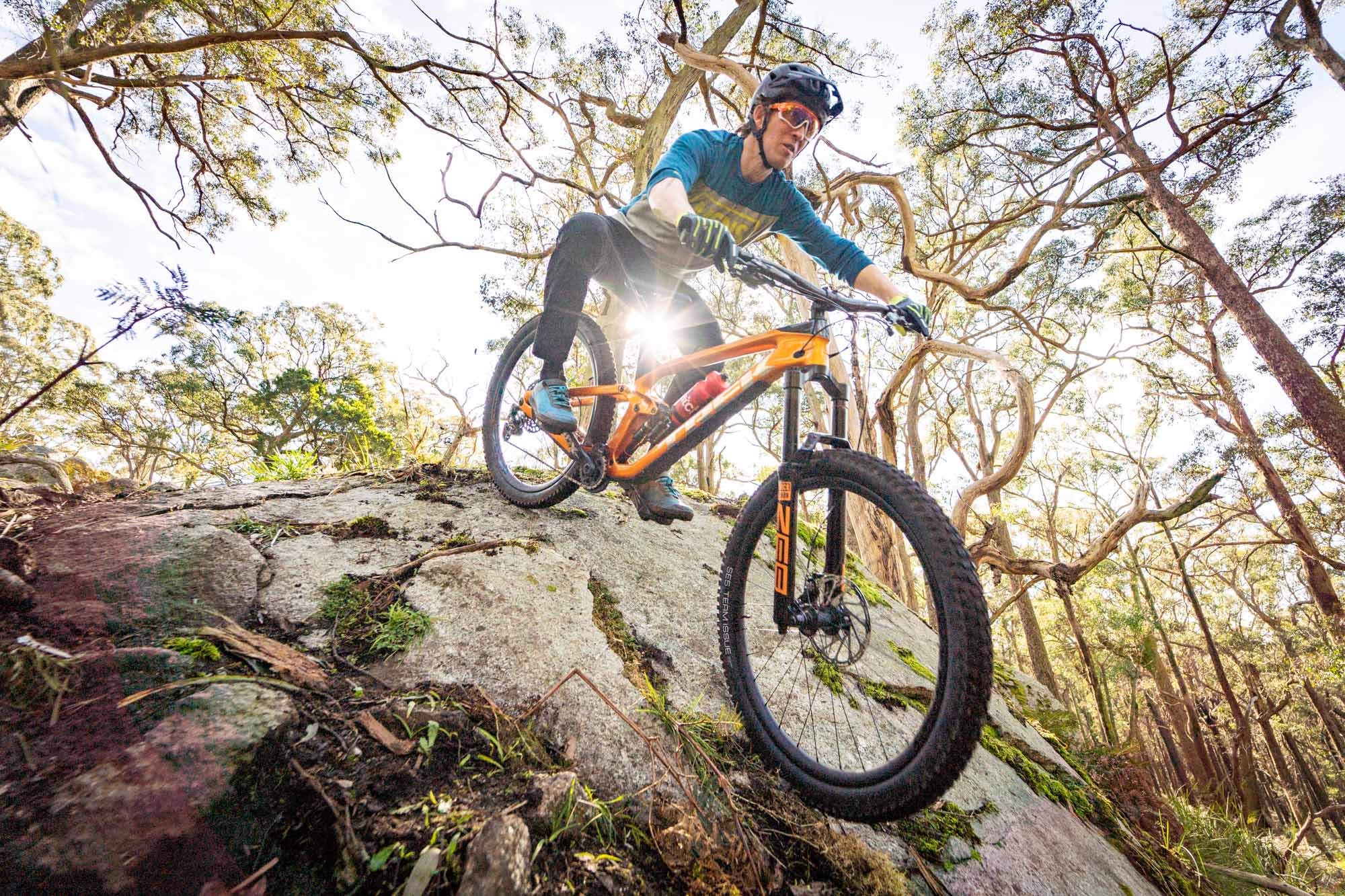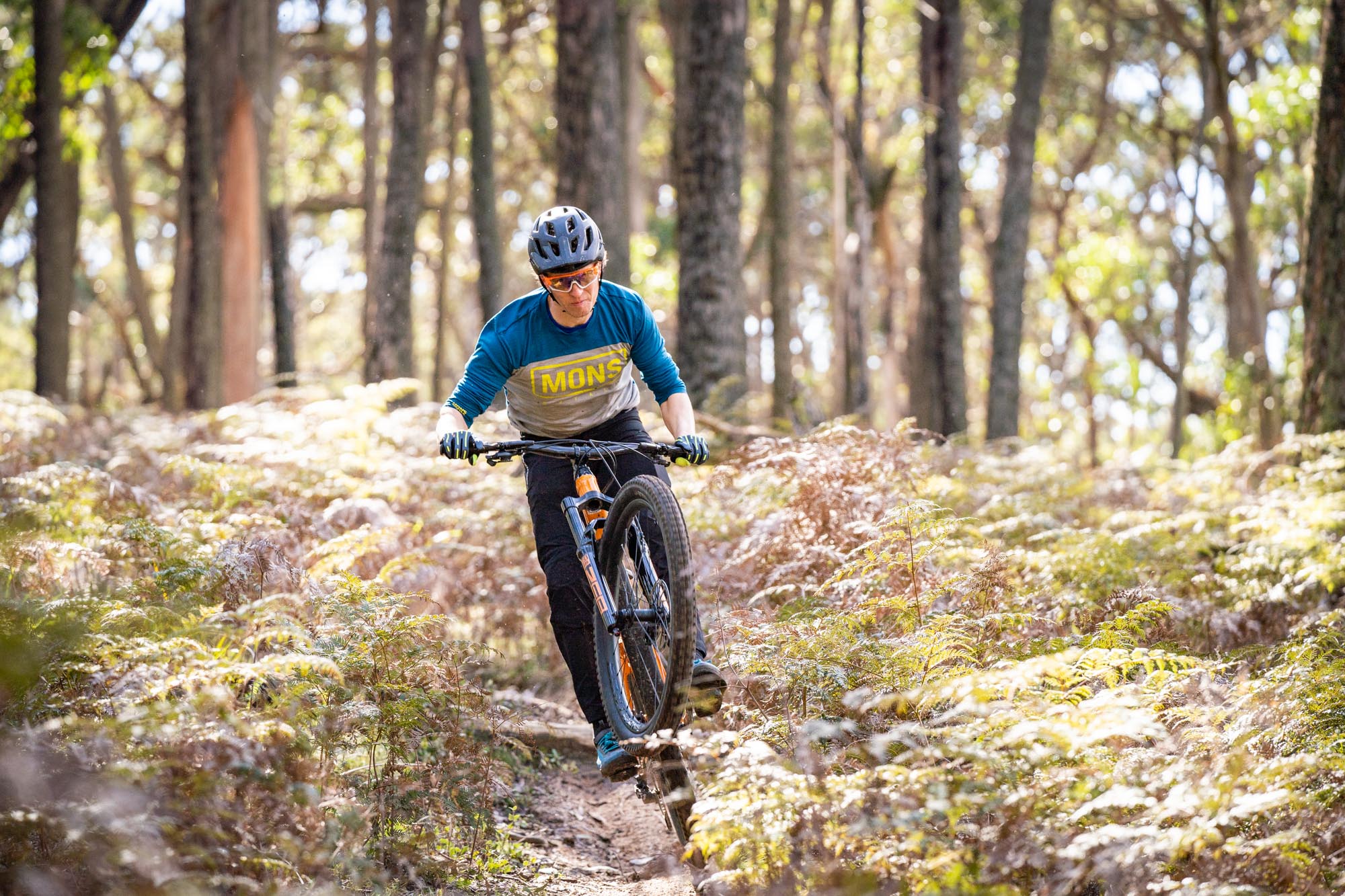There is no doubt about it. We have entered an exciting age in the world of enduro bikes. The sport is growing exponentially with self-perpetuating momentum. Technology available on bikes is more refined and capable than ever, which is leading to a boom in the expanse and quality of trails exploding all over the world, which fuels riders to go out and push these bikes to new limits, and opening the gates to new shredders entering the sport for the first time. Enduro racing has also become gnarlier and more competitive than ever, driving bike brands to go back to the drawing boards, constantly chasing better. And this, you guessed it, feeds back into greater bikes and accessibility to the sport. And so the cycle continues.
We here at Flow are, let’s be honest, giant nerds when it comes to this stuff. We live and breathe these machines and the places they can take us, and are absolutely buzzing to be a part of the industry at a time such as this. And with the demands required of modern-day enduro bikes and their riders, we find this is a particularly concentrated segment of innovation, with exciting new tech pouring in at an astonishing rate that we believe is truly making improvements in leaps and bounds to the bikes we ride, and the fun we can have on them.
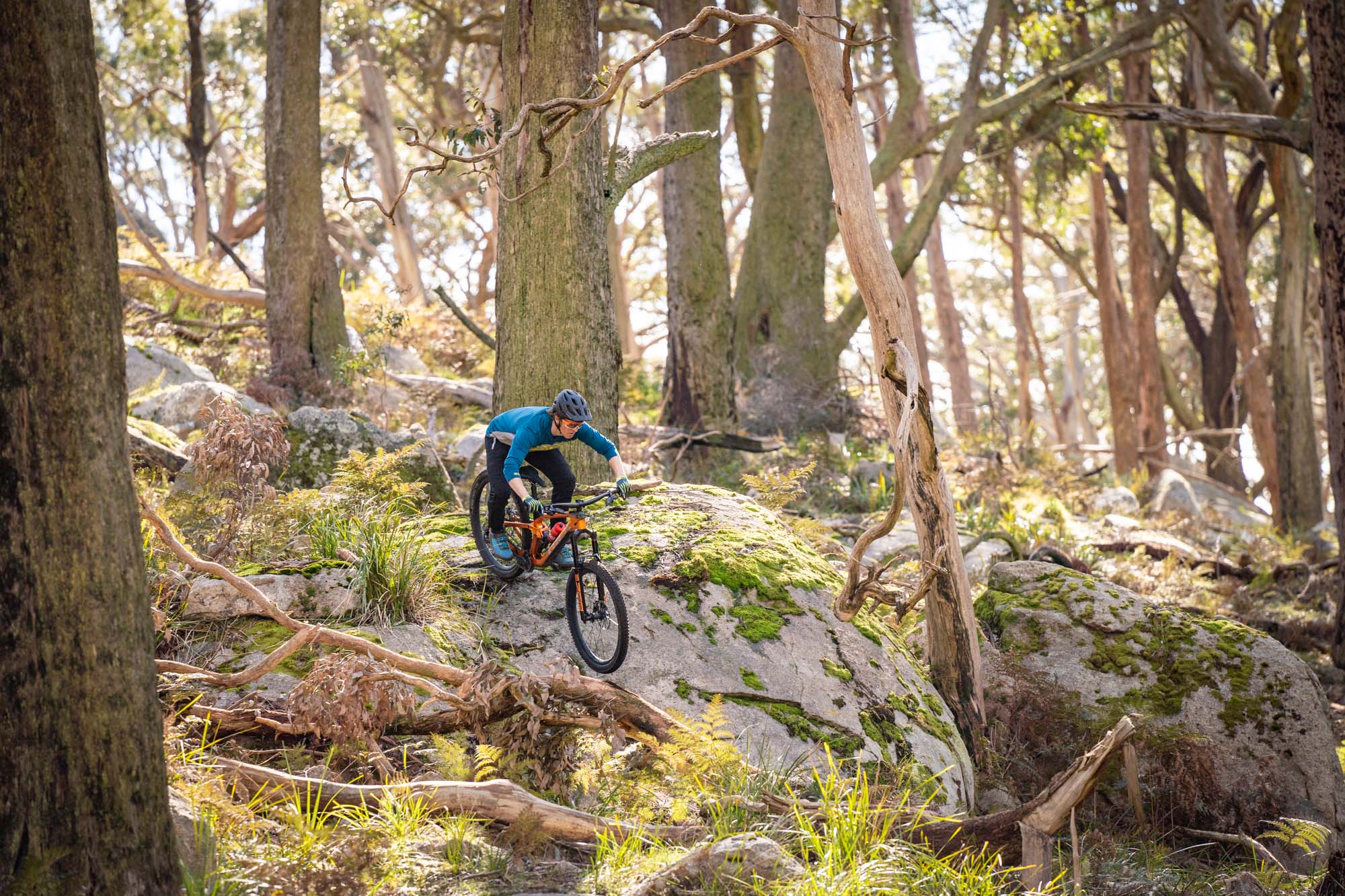
We’ve tested a boatload of these ultra-capable machines, and as an outlet for all of this excitement, we have compiled the following list of enduro bikes available now that we think are pushing the sport in the right direction. While every bike in this list can descend with the best of them while still climbing to the beginning of the next trail or stage, each of them possesses unique design features and ride characteristics that set them apart from the competition, and one another.
It’s also worth noting that you don’t necessarily need an ‘enduro bike’ to race enduros. Even some of the world’s best are choosing slightly shorter options — Canyon CLLCTV’s Dimitri Torodo has been racing a Spectral at World Cups while Charlie Murry from the Specialized Enduro Team has been riding a Stumpjumper EVO.
Of course, this is not an exhaustive list, and there are some popular bikes — like the Specialized Enduro — that aren’t here. The reason for that is that we haven’t tested one, and therefore can’t comment on its performance and how it compares to others in this category. Sure, we could make some assumptions based on what other folks have said, but that’s not how we run this show.
So without further ado, here are eight of the best enduro bikes we’ve ridden and reviewed.
- Looking for something a bit more svelte? Check out our pick of the top XC bikes
- Keen for some help on the climbs to maximise your adventures? Check out our pick of the top e-MTBs
The best enduro bikes ridden & reviewed
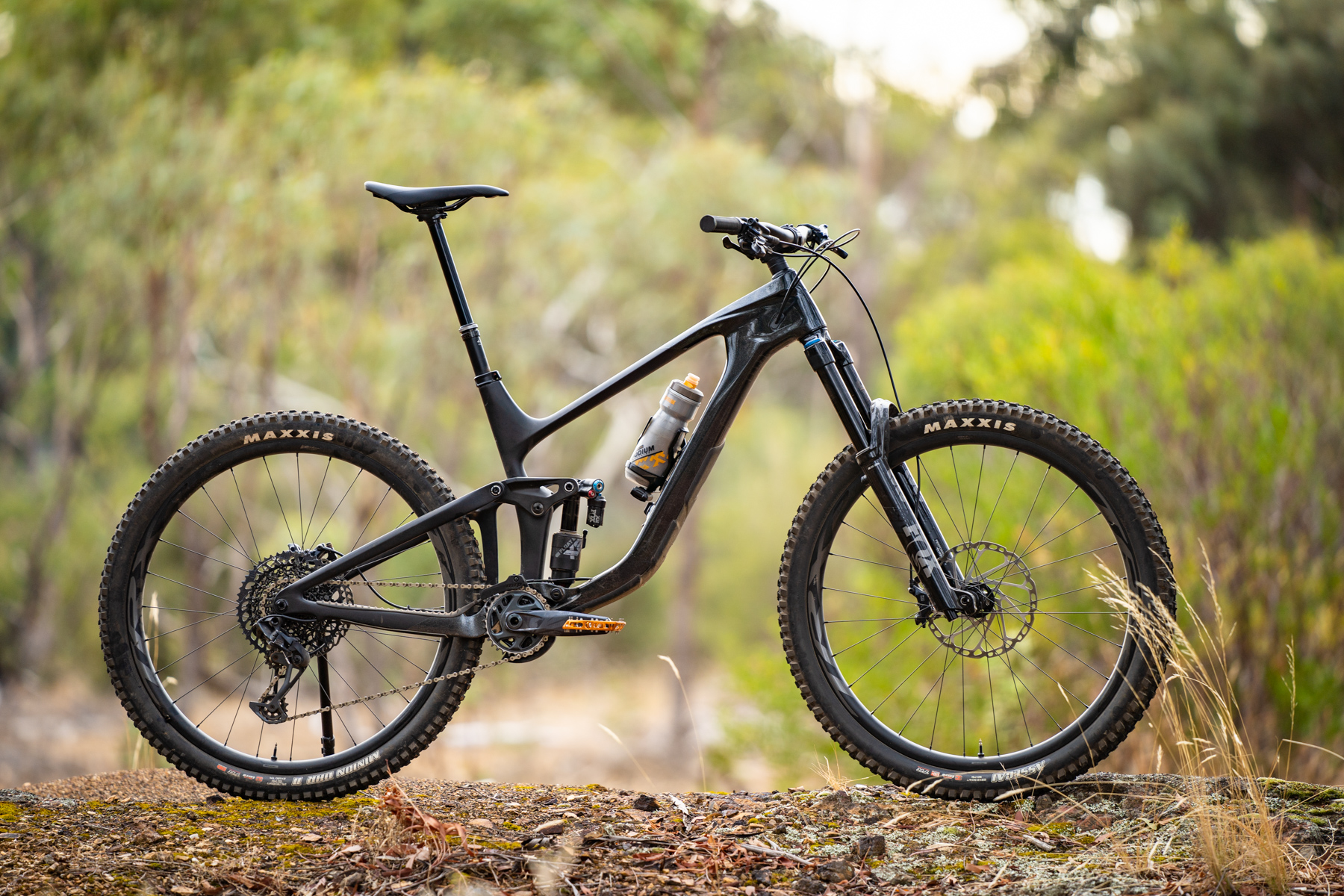
Giant Reign
Highs: Race-ready geometry and spec, fantastic composure in the rough stuff, mullet compatibility via a 3-position flip-chip, well-placed frame armour.
Lows: Frame storage hatch impractically small, the stiff 35mm bars transfer a bit of chatter up front.
Overhauled, stretched out and beefed up in all the right places, the all-new Giant Reign has entered 2023 with its best tyre forward — proving its race-winning potential already at the opening round of the Enduro World Cup in some seriously rowdy Aussie conditions.
Related:
- Squid’s Eye View Part 1 | Maydena EDR through the lens of Kristina Vackova
- Squid’s Eye View Part 2 | Maydena EDR through the lens of Justin Castles
Compared to its previous iteration, the Reign’s travel has been stretched out to 170mm up front and 160mm on the rear, activated via the fabled Maestro platform to deliver an awesomely plush, confidence-inspiring ride. The head angle has been slackened, chainstays stretched and reach increased, boosting the Reign’s enduro capabilities through the roof. Although this bike was never made for XC courses, power transfer is surprisingly efficient when stomping on the pedals, and its 15.04kg weight isn’t too hefty when compared to similar bikes in the category. Even with a climb switch on the rear shock, we predominantly left the bike in the fully open mode, serving up plenty of traction on loose and techy climbs. This bike really comes into its own however the moment you bring gravity into the equation.
With flip chips allowing for high, mid and low positions, the Reign allows riders to dial in the bike’s geometry for riding style, trail type or wheel configuration. With the flip-chip set to the low position, the 63.5° head angle rewards those that like to attack the descents. On the flip side, the high setting raises the BB to provide greater clearance for technical climbs, which are aided by the nice and steep seat tube angle of nearly 78°. We did however find that in this high-BB setting, the bike felt quite tall and awkward to handle. This setting does also allow the party animals out there to drop in a 27.5in rear wheel to go full-mullet if desired. All models also come with an adjustable long-stroke dropper post, which is a great feature by our books. The burly frame protection is well placed and provides not only great protection, but a nice and quiet ride regardless of how teeth-chattering the trail is.
The all-new Reign is as attractive as enduro bikes come these days, both in its curvy, understated aesthetic (we think), and its four competitively priced, well spec’d models. The Reign SX model has also made a comeback, with this model sitting even further in the gnar-zone, and features a dual crown fork and coil shock for those that have no interest in pedalling up, and full interest in sending big. You can see all of the specs, prices and details of the full lineup in our first-look article.
To dive deeper into just why we think this bike deserves its place on the list of the latest and greatest, check out our full 2023 Giant Reign review.
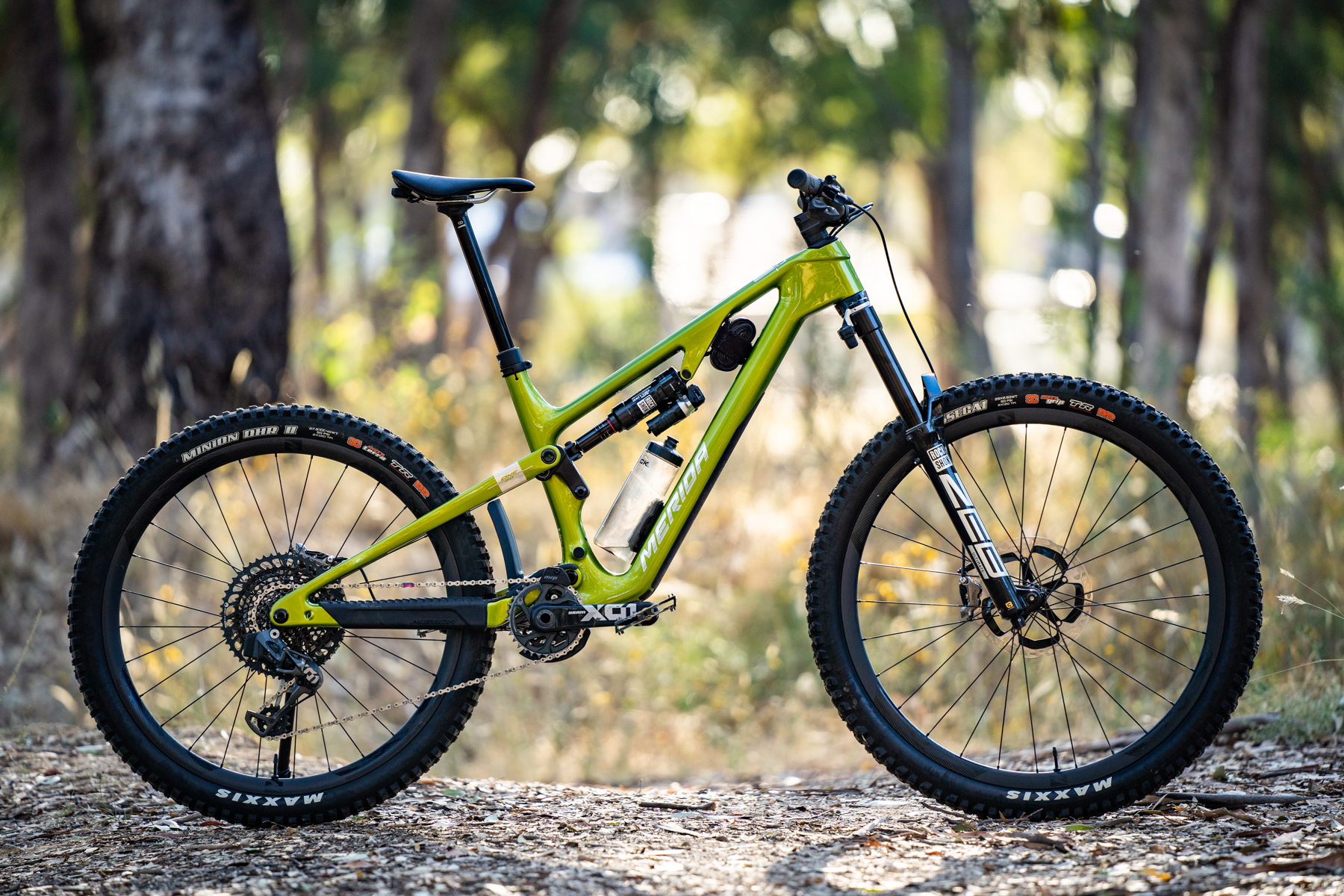
Merida One-Sixty
Highs: Modern enduro geometry, super playful suspension characteristics, mullet compatibility, 230mm dropper post, wide offering of models to suit most riders.
Lows: Cramped in-frame storage, issues with dropper post on test bike, headset cable routing
Gracing our eyeballs since its launch in late-2022 is the completely redesigned Merida One-Sixty. The aim of the game was to deliver one of the most playful, capable and versatile enduro bikes on the market. And gee-whiz, has Merida delivered.
From the very moment it was released, the One-Sixty struck us as an entirely different bike when placed next to its predecessor. And upon our first five minutes on the trail, we were able to confidently confirm that it too feels like an entirely new bike. The One-Sixty is right on the money with modern enduro bike geometry, employing a playful mix of longer, lower and slacker to result in a rig that is just as comfortable on backcountry epics as it is the enduro race stages — a statement few current bikes out there can boast.
The One-Sixty offers a few interesting changes between sizes. Firstly, sizes up to the medium come stocked with a 27.5in rear wheel and the large and XL options as full 29ers. The suspension receives a size-specific tune and making the leverage ratio more progressive the further up the sizing chart you move, providing greater support for heavier riders. When rocking the mullet configuration, the frame offers 171mm of rear travel, while opting for the 29er will reduce it to 160mm. This ample rear squish paired with a 170mm fork —or 180mm if you want to go big — makes this bike feel just at home on full-blown downhill laps as it does on undulating adventure rides. The head angle sits at a relaxed 64° whereas the very steep 79° seat angle still provides a comfortable climbing position.
Merida has now done away with the rearmost pivot on the bike, instead opting for a Flexstay rear triangle that the brand claims to boost stiffness, drops weight and creates a unique, lively ride characteristic. We can confirm that this bike is particularly playful, popping off jumps and blasting through chunky terrain with an energetic feel. The excellent seat angle on the One-Sixty places you in a comfortable position to tackle the climbs, however the lively suspension kinematic does feel a little over-zealous when you’re cranking hard out of the saddle.
The bike feels incredibly agile on those particularly curvy trails when the smaller rear wheel is dropped in — a fact that is far less apparent when running the 29er option. The tradeoff here is the increase in high-speed stability and composure on technical climbs. The great thing is, any new One-Sixty model in any size will be able to take either setup with the flip of a 2-position chip in the rear linkage.
The One-Sixty is available in 5 different models spanning both alloy and carbon chassis, each boasting a solid assortment of tiered spec options. Ranging from value-focused fit-outs to the stuff our wallets have nightmares about, we are genuinely impressed at Merida’s offering of a race-ready enduro bike the entire way through the lineup. Every model benefits from the same geometry, mullet options, primo Maxxis rubber and 230mm adjustable dropper post. Nice one, Merida!
Whether you’re looking to enter the gnarly end of the sport or you’re up for a blingy new upgrade to your fleet, check out the Merida One-Sixty review to fill yourself in on the rest of the tech, the niggling issues we encountered, alongside a side-by-side comparison to one of the most popular enduro rigs on the market.
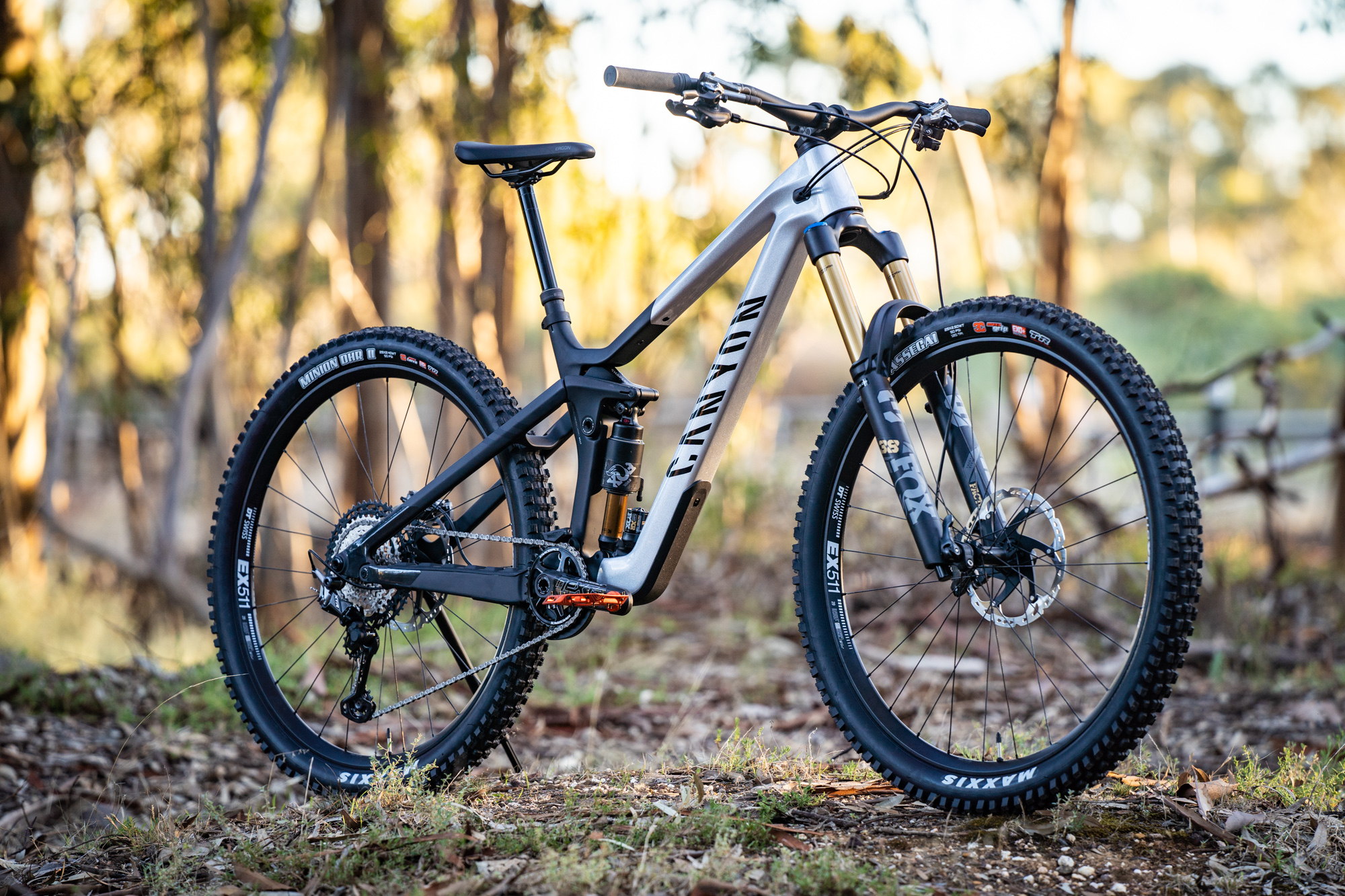
Canyon Strive
Highs: One of the most race-aligned production bikes available, versatile personality thanks to the Shapeshifter, incredibly stable at speed through any kind of terrain.
Lows: Race-focused geo makes it less appropriate for everyday riders, and length makes the bike tougher to handle on tighter trails.
The Canyon Strive. Perhaps one of the most aggressive and well-known enduro sleds received a remake for 2022, incorporating feedback from racers like 2021 EWS Champion Jack Moir — before he changed teams of course. The result is something wildly aggressive, a veritable weapon beneath the right rider.
But what has changed from the previous model? To cope with the increasingly bonkers nature of modern enduro stages and the breakneck speeds they are raced at, the latest Strive CFR has been given a drastic update, taking it from one of the most conservative to one of the most aggressive, race-focused bikes out there. Travel has been bumped up from 150 to 160mm, which is paired to a 170mm fork. As previously, the bike still features Canyon’s trademark Shapeshifter system in order to radicalise the geometry to the extent it has.
For those unfamiliar, the Shapeshifter is a handlebar remote-activated system with two options – Pedal or Shred. This lever activates a gas spring in the rear shock, altering the bike’s geometry, travel and suspension kinematics on the fly. This allows the rider to shorten travel to a much rampier 140mm, raise BB height by 15mm and steepen the head angle by 1.5°.
Whether you’re stomping on the pedals in flat sections or conserving energy on the climbs, the Shapeshifter can lead to significant benefits in a race setting. With such powers being brought to your fingertips, this granted the Canyon team the freedom to make this bike seriously aggressive when in Shred mode. Sporting a mega-slack 63° head angle (the same as Canyon’s DH bike, the Sender), this bike feels right at home on the enduro circuit’s steepest trails. To further add to the Strive’s race alignment, reach has been stretched out to a very long 480mm on a medium — a figure that would not be uncommon on many competing brands’ large frames. So you’re able to actually reach the bars at all, a nice’n’steep 76.5° seat angle puts riders in a reasonably comfortable pedalling position, while a nifty reach adjust headset allows further dial-ability of your cockpit.
There are currently just three models available in the Strive, including an extra-pimped out special edition Troy Lee Designs model for those chasing the same look and spec list as the Canyon team riders.
There is so much more to this weapon than we were able to cover here, so make sure you take a look over the 2022 Canyon Strive Review to fill in on the specifics.
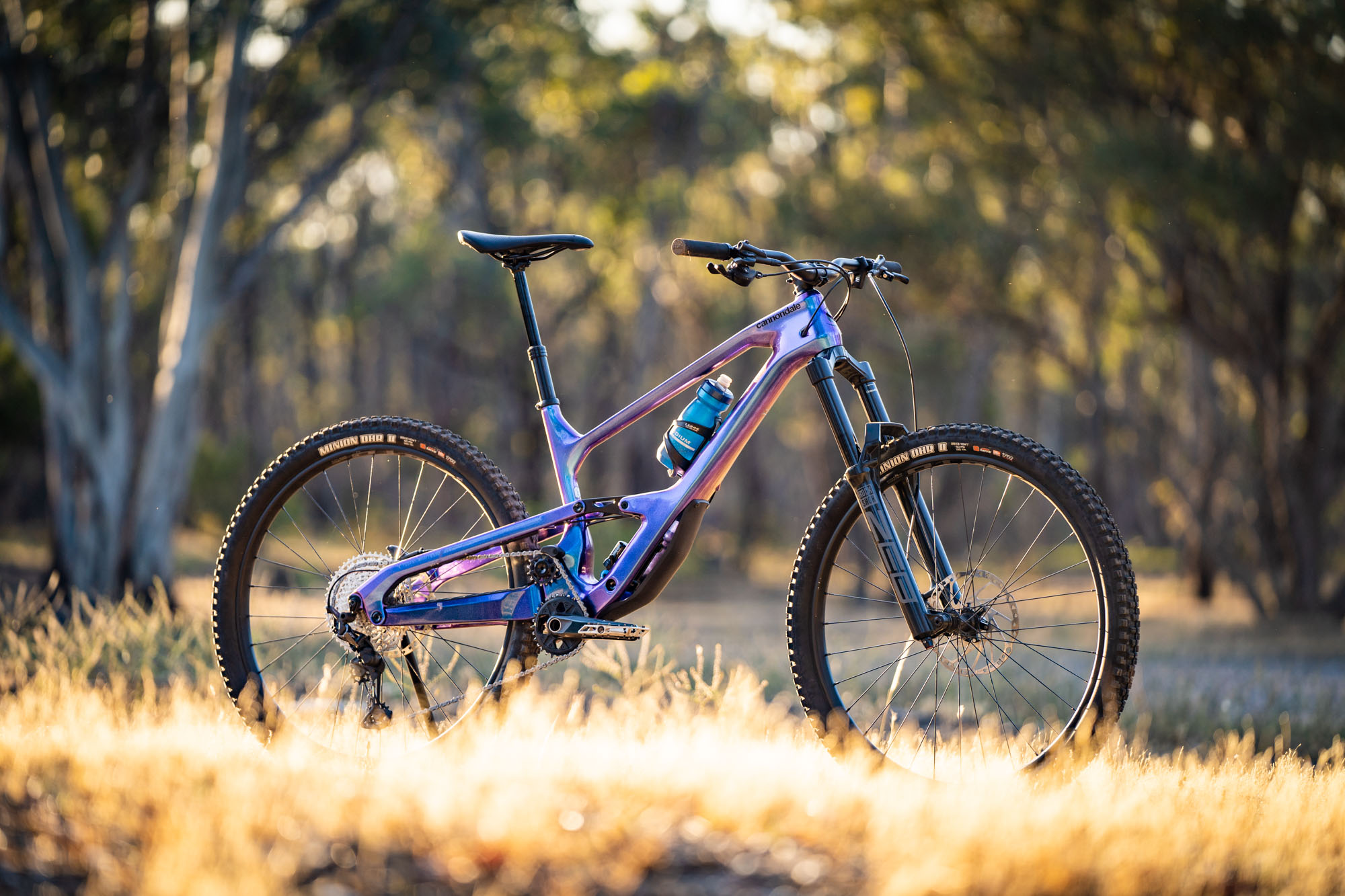
Cannondale Jekyll
Highs: Unique design delivers excellent stability and handling, scaled rear centre between sizes, double-take factor.
Lows: Could use a longer dropper post, shock cavity captures trail crud.
While we’ve now had a bit of time to process the new Jekyll since its greatly hyped release in mid-2021, we still can’t help but let out a little sheeesh every time we see one. Cannondale caused quite a stir with their addition to the growing family of high-pivot enduro sleds, taking a truly innovative approach to their offering geared towards the rowdy end of the sport.
Just one look at this bike tells you that it is something different. The unique frame delivers 165mm of well-balanced, progressive squish via a redesigned four-bar linkage, driving a rear shock that sits tucked exceptionally low in its downtube hollow. A 170mm fork up front completes the equation, making this a ride created to deal with some seriously gnarly terrain. The real eye-catching feature of this bike is its mid-high pivot design, implemented to provide a more rearward axle path that makes it feel as though the suspension doesn’t just soak up those square edge hits, but instead moves with the terrain.
An idler pulley then helps to minimise chain growth and pedal-kick as the suspension moves through its travel. You’ll find a similarly situated pivot placement on the GT Force, and a much higher pivot design on the Norco Range, among a few other long-travel bikes on the market. The Jekyll is 29in specific, with no adjustable geometry or flip chips to be found. This renders the bike incapable of rocking the mullet hairstyle, just in case you were wondering.
But when the going gets tough, how do these space-age aesthetics and fancy features translate into on-trail performance? The Jekyll’s well-balanced geometry, supple suspension and thoughtfully selected components make for an incredibly stable bike at high speed, while also not feeling as long and cumbersome as some of the other enduro-specific rides out there today.
The bike is reasonably hefty, with our large-size test bike weighing in at 16.14kg, however much of this weight sits low in the frame, adding to its feeling of unmovable stability and rail-like cornering. The highly active suspension can be felt on steep climbs, and the climb switch on the shock is made difficult to reach due to the shock’s tucked-away placement. A 77.5° seat angle does however position the rider comfortably for stints in the saddle. When it comes down to it though, it is the descending prowess of the Jekyll that really shines. A 64° head angle and tall riser bar give this bike a fun yet sure-footed feeling at any speed. We do however wish that Cannondale stocked this bike with a longer dropper, with the 150mm dropper post limiting manoeuvrability.
There are two Jekyll models available, both with the same carbon frame and high-pivot design, offering a mid-level and a high-end fit-out. Both models are great value, however we imagine that many folks wanting to race this bike may have a few initial upgrades that they might make before it reaches that A-list spec that we all dream of. Another cool thing? Each size of the Jekyll comes with slightly altered pivot placements, scaling the rear centre, retaining a balanced position and optimising suspension kinematics for different sized riders.
Overall, we’re mighty impressed with this striking enduro whip, performing exceptionally well throughout our testing period regardless of what we threw at it. To dive further into the Jekyll’s nooks, crannies and hollows, take a read of our full review here.
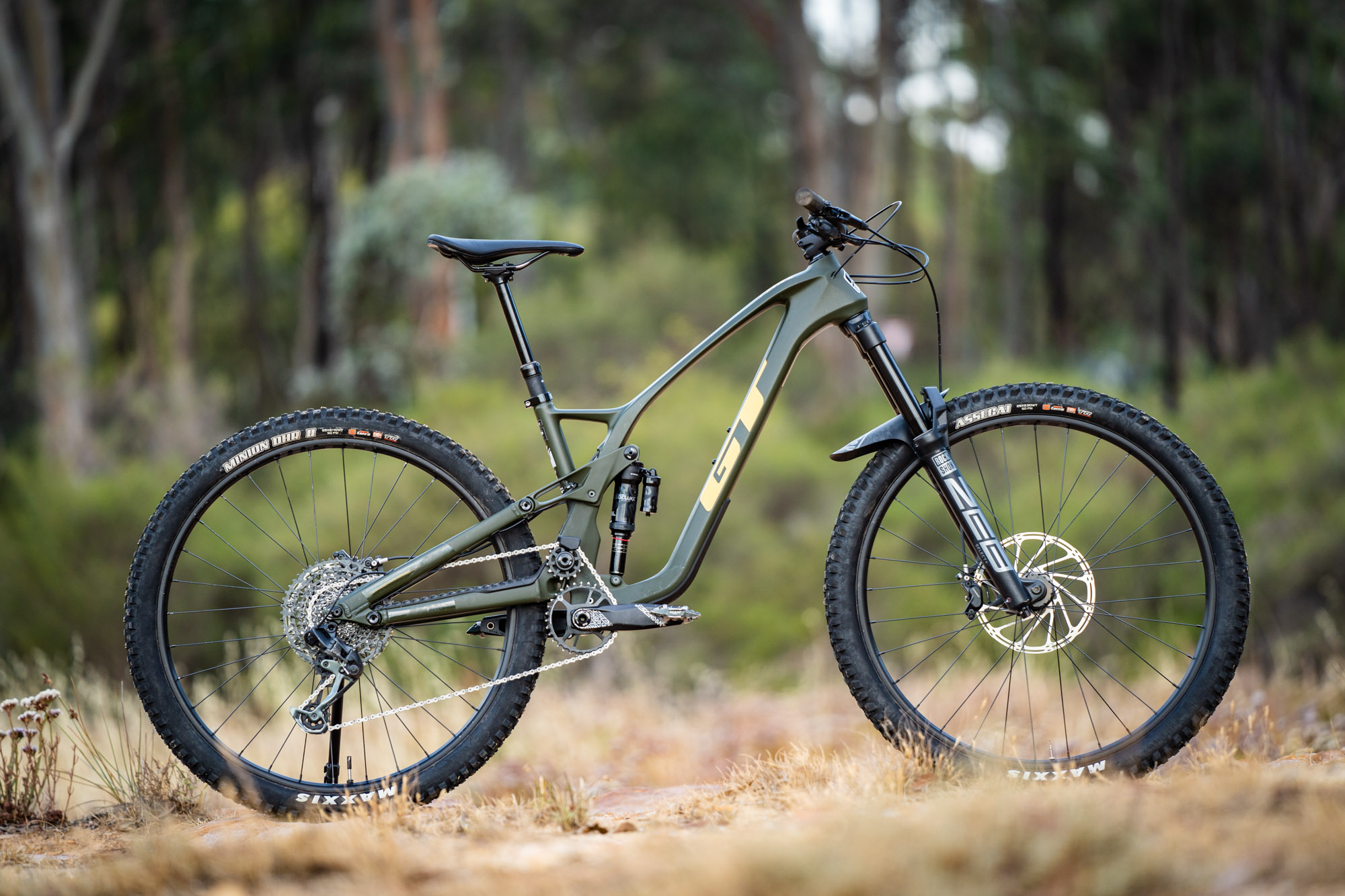
GT Force
Highs: Incredibly capable descender, adjustable dropouts, immediately comfortable geometry.
Lows: Hefty, sluggish on the climbs, fairly noisy.
Having played things rather conservatively in years gone by, GT has made a statement with the release of the Force for 2022. An undeniable shred-sled, the Force is a high-pivot monster with an insatiable appetite for sketchy terrain. But is it perfect? Read on to find out.
The GT Force is an exclusively 29in enduro beast with a set of credentials that immediately tell you exactly what this bike is about. At 16.24kg for a size medium with a carbon mainframe and alloy rear triangle, the bike is no featherweight fighter. It rocks 170mm up front paired with 160mm at the rear, with the mid-high pivot, four bar suspension layout tracing a slightly rearward axle path over the traditional up-and-down movement, albeit moving only about 10mm backwards as it plunges through its travel. This does however help the bike to not only deal with chunky terrain, but also accelerate through it as you hurtle your way down just about anything in front of you. The idler pulley then helps to deal with chain growth and pedal kickback, a similar design to what you’ll find on the Cannondale Jekyll and the Norco Range.
The 63.5° head angle, towering stack height and out-of-the-box riser bars means this bike will excel on anything pointing downwards, be it enduro stages or downhill bike park laps. A very steep seat angle of 78° balances such aggressive numbers nicely, making it quite a comfortable bike to climb on, too. However, the aforementioned weight of the bike will still have you working hard for those trailheads. The rear dropouts on the Force feature a flip chip that allows riders to extend or shorten the length of the bike, dialling in its character to suit the rider style or terrain, be it tight and jibby, or freight-train-without-brakes kinda riding.
The suspension on the Force does take a bit of noodle-scratching to figure out, with us having to remove fork tokens and stray from recommended suspension pressures before we landed on a set-up that felt balanced. Once we did though, this bike felt phenomenal, tracking the terrain beautifully and making us want to push harder through the sketchy stuff than we usually feel comfortable doing.
With all of these praises, it must also be mentioned that this bike is by no means quiet. Chain angle in the lower gears causes noisy rubbing on the idler pulley chain guide, and cable routing is noisy and causes rubbing at points.
When we reviewed the Force there were three models available, however for 2023 it appears PSI is only bringing the top-end Force Carbon Pro LE into Australia. This build comes in at $7,999 AUD, and features a slick set of running gear from Rockshox and SRAM.
We had a lot to say about this bike, and not all could be said here. Head over to the full review of the GT Force to get the rest of the good stuff!
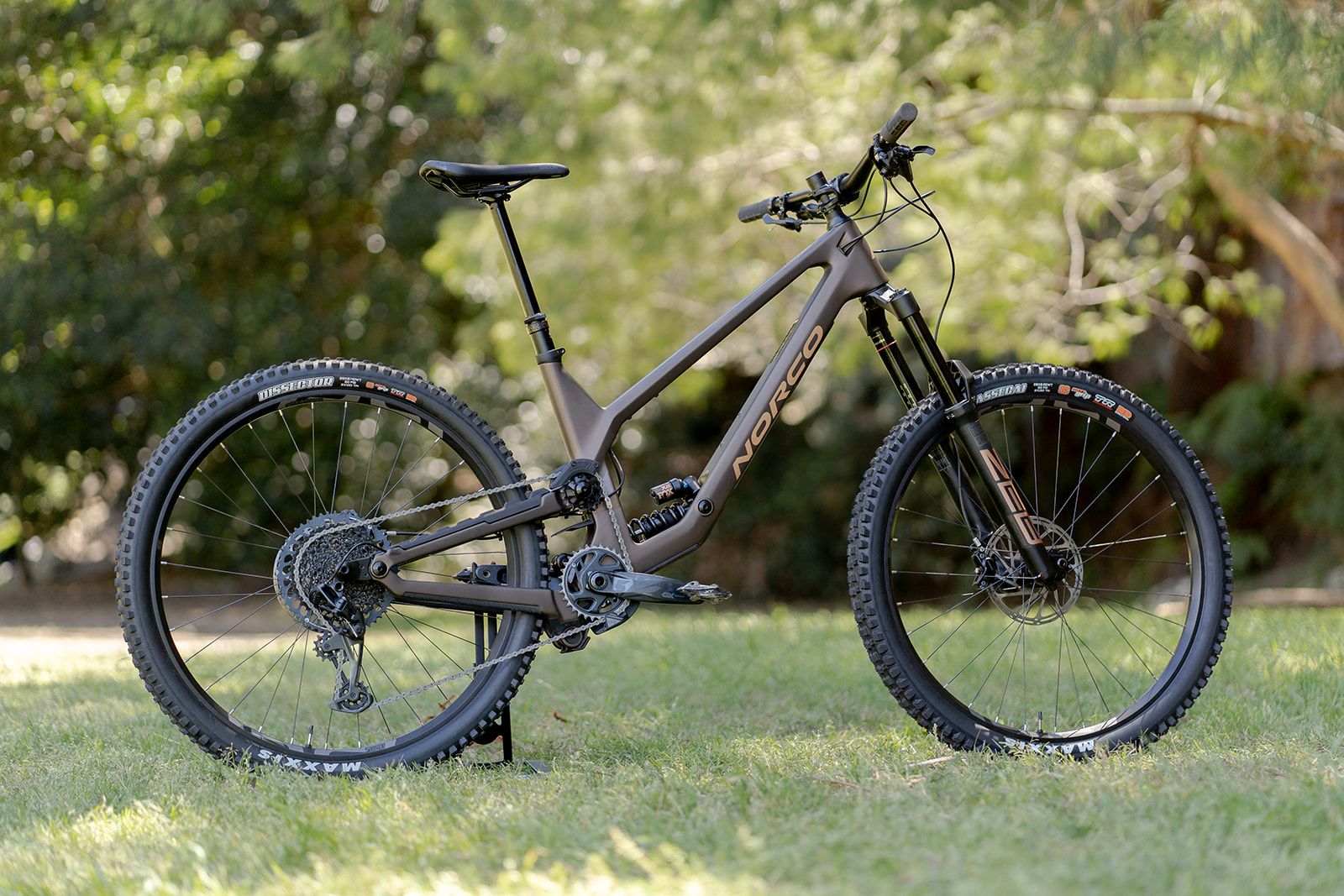
Norco Range
Highs: Incredibly capable and confidence-inspiring descending, great tyre combo
Lows: Lifting the bike above ankle-height, manoeuvrability on tighter trails
After a four-year run with the previous layout, 2022 brought us the hotly anticipated redesigned Norco Range. A high pivot, low-slung monster truck of a bike that doesn’t just excel on rough trails, but devours them.
We’ll start this off by addressing the elephant in the room. This is one big-boned beast. Our Large size Norco Range C2 test bike, with its carbon chassis, 29in hoops, tubeless-setup DoubleDown tyres, coil shock, GX drivetrain with idler pulley and a chainring bash guard for good measure, all came in at a hefty 17.15kg. This figure puts it well beyond most of the enduro field we have ever tested, and even places it amongst some of the lighter e-MTBs out there.
When the terrain points down however, this weight all but goes out the window, making this bike one seriously aggressive high-speed descender. 170mm of super supple travel front and rear, the frame employs a funky Virtual High Pivot design that allows this bike to swallow entire trails whole. The linkage allows the rear wheel to move significantly backwards as the suspension compresses, meaning it can avoid becoming hung up on large square-edge hits, allowing you to track perfectly — and rapidly — across the gnarliest terrain imaginable.
The idler pulley, much like the GT Force and the Cannondale Jekyll, prevents chain growth and reduces pedal kickback while the linkage does its thing. A mega-slack head angle of 63.25° makes the handling feel like a DH bike on the descents, while a conversely steep 77° seat angle means this bike is actually quite comfortable to climb —providing you’re not in a rush to get where you’re going. With the distant reach and the bike growing in length as the suspension compresses, it can be a tough rig to wrangle on tight trails, preferring to hold the wide line around most corners as opposed to cutting in tight. In fact, it’s actually quite difficult to break traction on this beast, meaning you’ll want to pick your line from the start, hold on tight and let this beast of a bike do its thing.
The Range features size-specific geometry with a scaled rear centre length to ensure weight distribution remains optimal regardless of frame or rider size, retaining the same confidence-inspiring handling characteristics across the size curve.
The Range is made up of three models, spanning from mid-level to high-end componentry, all coming ready to race right out of the box.
If you want to find out more about the bike that could double as the boulder that chased Indiana Jones in the first movie, then check out our full 2022 Norco Range review here.
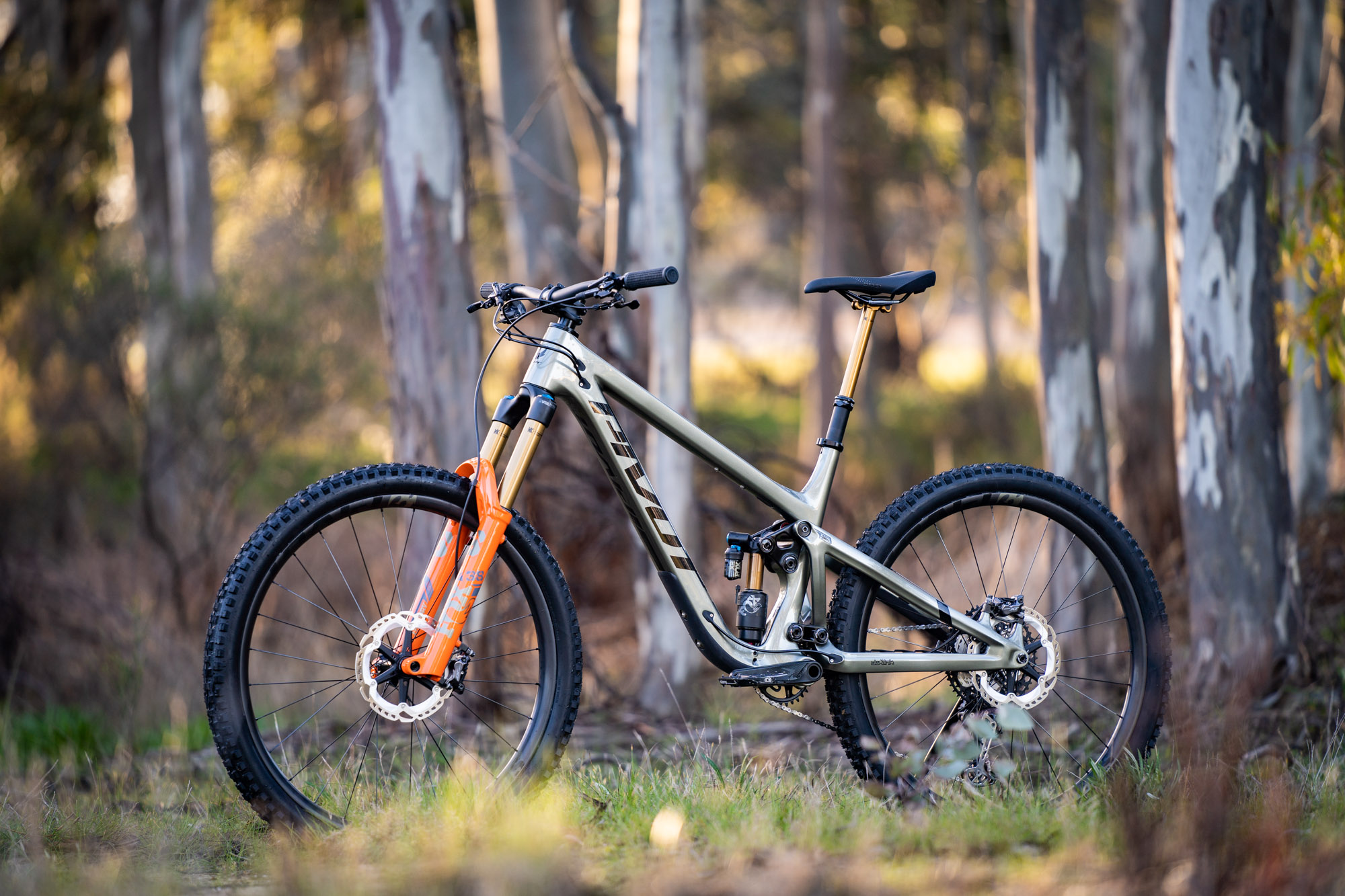
Pivot Firebird
Highs: Super stable yet responsive feeling on rough terrain, still a fun bike on more chilled and longer rides, bling bling
Lows: Eye-watering price tag, rattle from gear and dropper cables, under-gunned tyres
After 13 years and four highly successful preceding models, the Pivot Firebird has entered its 5th evolution for the 2022 season. And damn, is this thing a stunner. We assure you that these clean, refined looks are only surface level however, with the Firebird 29 being one seriously mean bike the moment you throw the leg over it.
It wouldn’t be incorrect to label the Firebird 29 as the fighter jet of enduro bikes, being an ultra-premium, high-performance ride worthy of the World’s fastest pilots. Its sleek carbon frame delivers 165mm of travel, which is paired with a 170mm fork and rolling on fancy 29in wheels out of the box. This can be set up to suit just about any rider however, with a 2-position flip-chip enabling a 0.6° head angle alteration and 6mm BB height adjustment, or a mullet conversion if desired. The frame will also handle swapping out to a 180mm fork if you’re that way declined. Head angle in the low position sits at a relaxed 64°, with the seat angle spanning between 76°-77° – a figure that fluctuates based on the frame size. Yep, the rear centre of each frame is scaled to suit the size, ensuring a balanced weight distribution of the rider regardless of the selected frame size.
These geometric figures place the Firebird right within the range of modern enduro bikes, positioning the rider from the get-go to conquer any descent or climb before them. It is the incredibly balanced, super progressive suspension characteristics of this bike that really make it shine through. The DW-link design delivers insane traction and a rearward axle path, meaning obstacles become less of a concern as you charge through them faster than you previously thought possible. The nuance of this bike that helps it stand apart from others in the category however is its lively feeling. Where some other bikes truck through chunky rock sections in a straight line as you barely register their existence, the Firebird retains a delicate feedback beneath you that allows you to manipulate the bike as you please without it ever feeling uncomfortable — a trait being the result of a light, stiff frame, balanced geometry, well-tuned suspension and superb componentry.
The overall weight of our Large test bike came to 14.66kg, an impressive figure for a long-travel enduro bike. This number does factor in the lightweight EXO+ tyre casings however, which we found to be insufficient for the kind of riding this bike is otherwise capable of.
The Pivot Firebird comes in a mind-boggling 15 spec combinations, the “most affordable” of them still a staggering $10999. With this kind of price tag though, you can be sure that you’re not just getting a pretty showbike, but a mean, performance-oriented machine that lives for the top step of the podium. But yes, it does look pretty damn sweet too.
If you need any more convincing on the prowess of this bike, jump over to our full review of the 2022 Pivot Firebird 29 here.
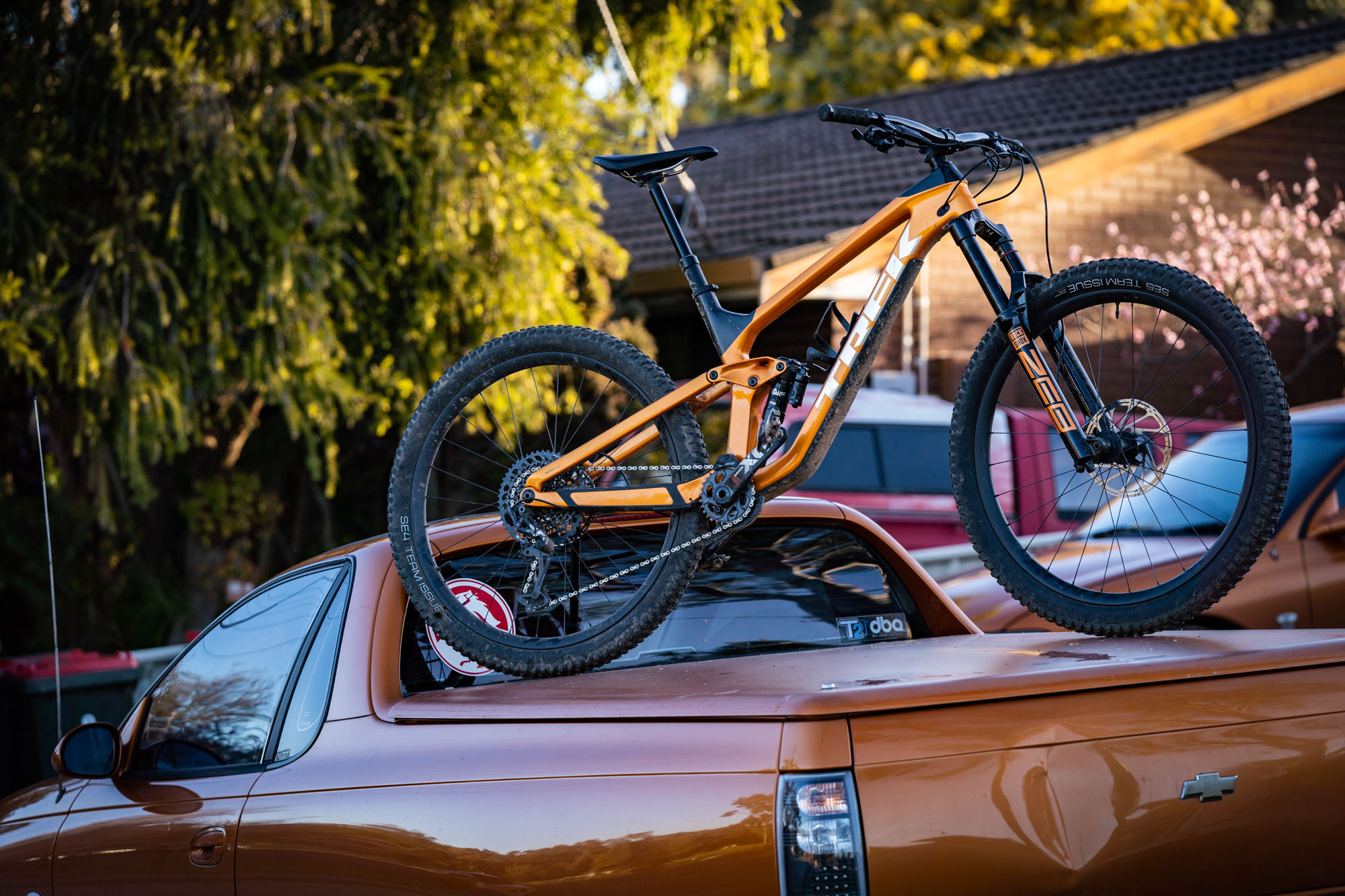
Trek Slash
Highs: Supple yet very lively suspension performance, quiet ride, well armoured
Lows: Comparatively slack seat angle, tight access to in-frame storage
The Slash. The very silhouette of this bike is instantly recognisable, there’s a good chance you’ll spot one model or another out on the trails on any given day. The 2021 season saw Trek’s flagship enduro rig undergo a major overhaul, making one of the world’s most popular enduro bikes better than ever before. So, what’s new?
To cope with the rigorous demands and silly speeds of modern enduro racing, the Slash has added 10mm of travel to both ends of the bike, with 170mm up front and 160mm at the rear. Trek, alongside RockShox, have co-designed a proprietary rear shock, especially for the Slash that delivers a supremely responsive and buttery feeling to the suspension regardless of the trail type or conditions. This is largely due to the ultra-tuneable proprietary rear shock found throughout most of the range. The overall package delivers quite a progressive spring rate, meaning we were able to go big on this bike without ever feeling like we were blowing through the travel. Trek’s initial suspension setup guide also proved to be a great baseline that we didn’t need to stray far from at all.
However following RockShox’s major revamp of its boingers and the launch of Flight Attendant, Trek has shifted back into off-the-rack rear shocks.
From the moment we jumped on the Slash, we noticed the welcome changes over the geo of the previous model of Slash. Trek’s Mino Link flip-chip features a low and a high position, with the low position rocking a head angle of 64.1° and a seat tube angle of 75.7°. The high position will lift the BB height by 7mm and steepen the head and seat angles by 0.5°. This seat angle may just be one of the only slight niggles we have with the Slash’s geometry, sitting a little slacker than many other bikes within the category. Once we slid the seat forward on the rails however, this brought things to a much more comfortable climbing position, closer to 78°.
In fact, bike does climb surprisingly well, provided you remain seated. As soon as you stand up to put the power down, that super-active suspension will join the party and gobble up some of that precious energy you’re expending. The total package of our Slash 9.9 X01 came in at a very respectable 14.56kg, making it much more pleasant a bike for those longer days than much of the competition.
Although it can definitely be a plough-machine if that’s how you want to ride, the Slash is surprisingly playful despite having such supple and active suspension. If you want to switch line mid-send through a rock garden, the Slash will happily oblige. Much of this feeling comes down to the short chainstays, making it all too easy to shift weight over the back of the bike to maneuver how you see fit, aided further by the ample mid-stroke support that can give you that needed pop in the rough stuff if you want to get airborne. It possesses traction in spades, yet the playful nature and short stays of the bike allow you to break the rules and square corners off if you feel like it.
The closer you look, the more detail you’ll find on this bike. Trek have revised their Knock Block headset allowing greater range of motion before abruptly stopping, and beneath the bottle cage mounts you’ll find a handy, albeit rather tight downtube storage window. The frame protection is all exceptionally well placed and gave us peace of mind even on those particularly loose, rocky trails.
There are currently 10 models of the Slash available, ranging from entry-level alloy models through to robo-suspension space-bikes from the future.
All in all, we believe that the Slash is one enduro bike that isn’t just defined by its geo chart, instead excelling in areas that pleasantly surprised us once out on the trail, culminating in an exhilarating and incredibly fun ride. And for most of us, isn’t that why we ride in the first place?
There is plenty more to learn about this mega-fun enduro bike, so make sure you take a read over our full review of the 2021 Trek Slash to fill in on the rest. But, Trek has also just revamped its big travel bruiser, and changed the suspension layout to a high-pivot design. We have one coming to Flow HQ, but in the meantime, here’s what you need to know.
Honourable mentions
While our list here is of the creme de la creme of the category, there are a pair of bikes that we felt also garnered a mention on this list.
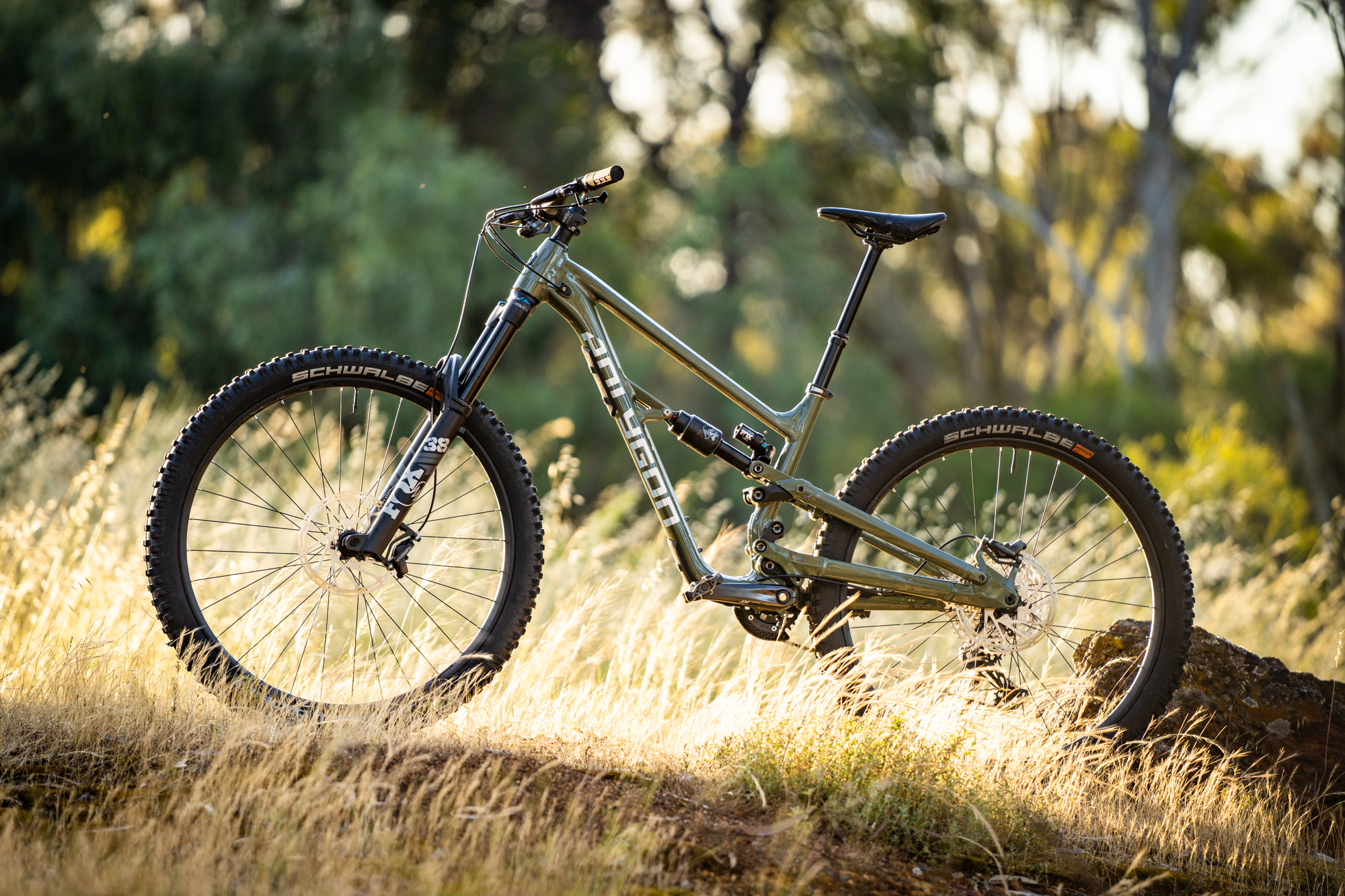
Polygon Collosus N9
First up is the Polygon Collosus. This alloy bruiser has a solid build kit and spot-on geometry, and with a competitive price tag, we expect you’ll see a lot of these ripping around your local trails.
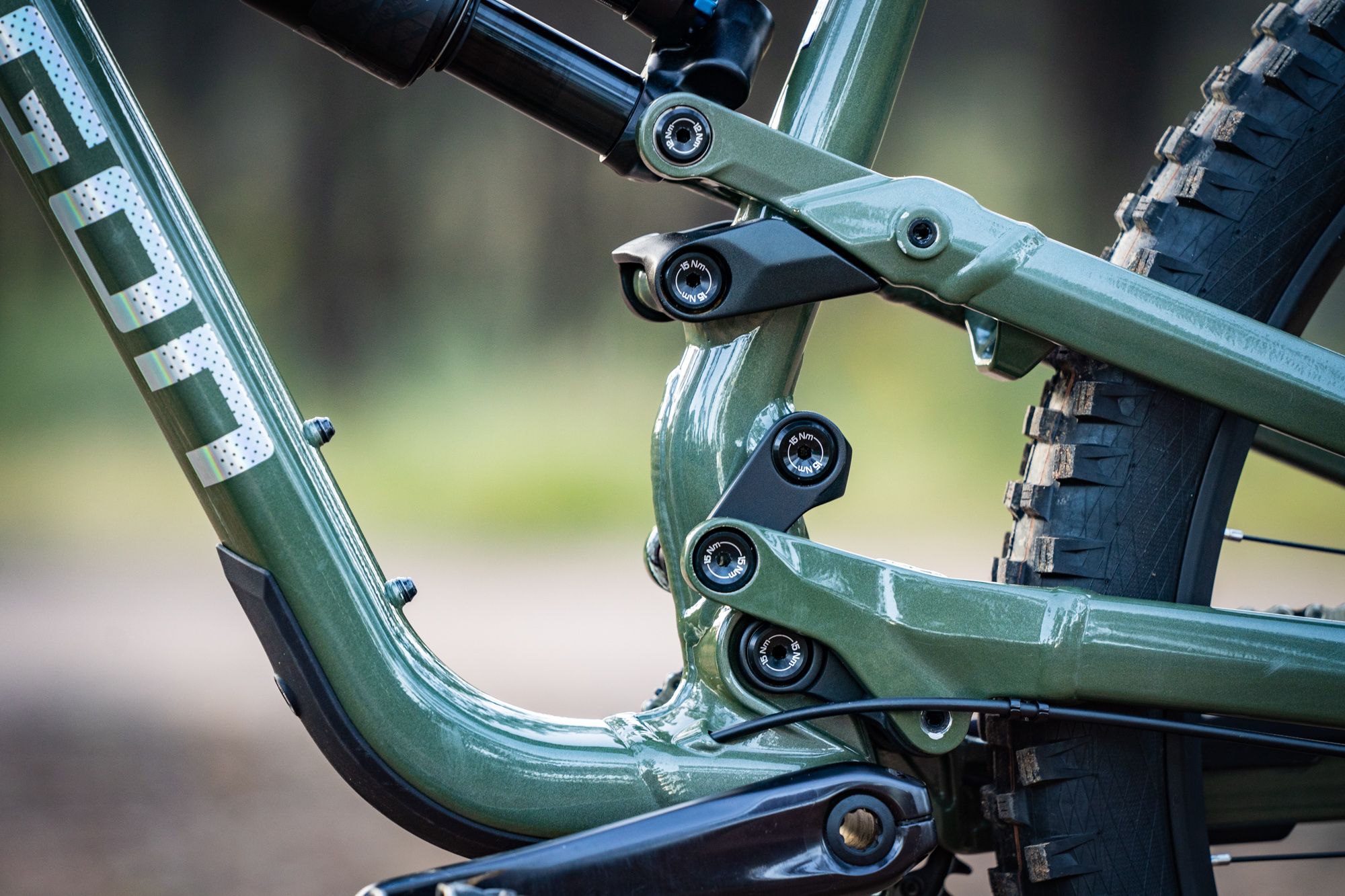
With chunky tyres and supple suspension, it hugs the ground like it’s made from velcro and laughs in the face of rough and technical terrain. The IFS suspension platform also gives it fantastic pedal efficiency, but it has 16 pivot bearings that will need to be looked after over the lifespan of the bike.
With that, it’s chonky at 17.88kg, it lacks mullet compatibility and tool storage or accessory mounts.
But priced at $4,999 AUD, it’s half the cost of some of the other bikes on this list and the value-to-capability proposition is through the roof. Read more about the Polygon Gollsus N9 here.
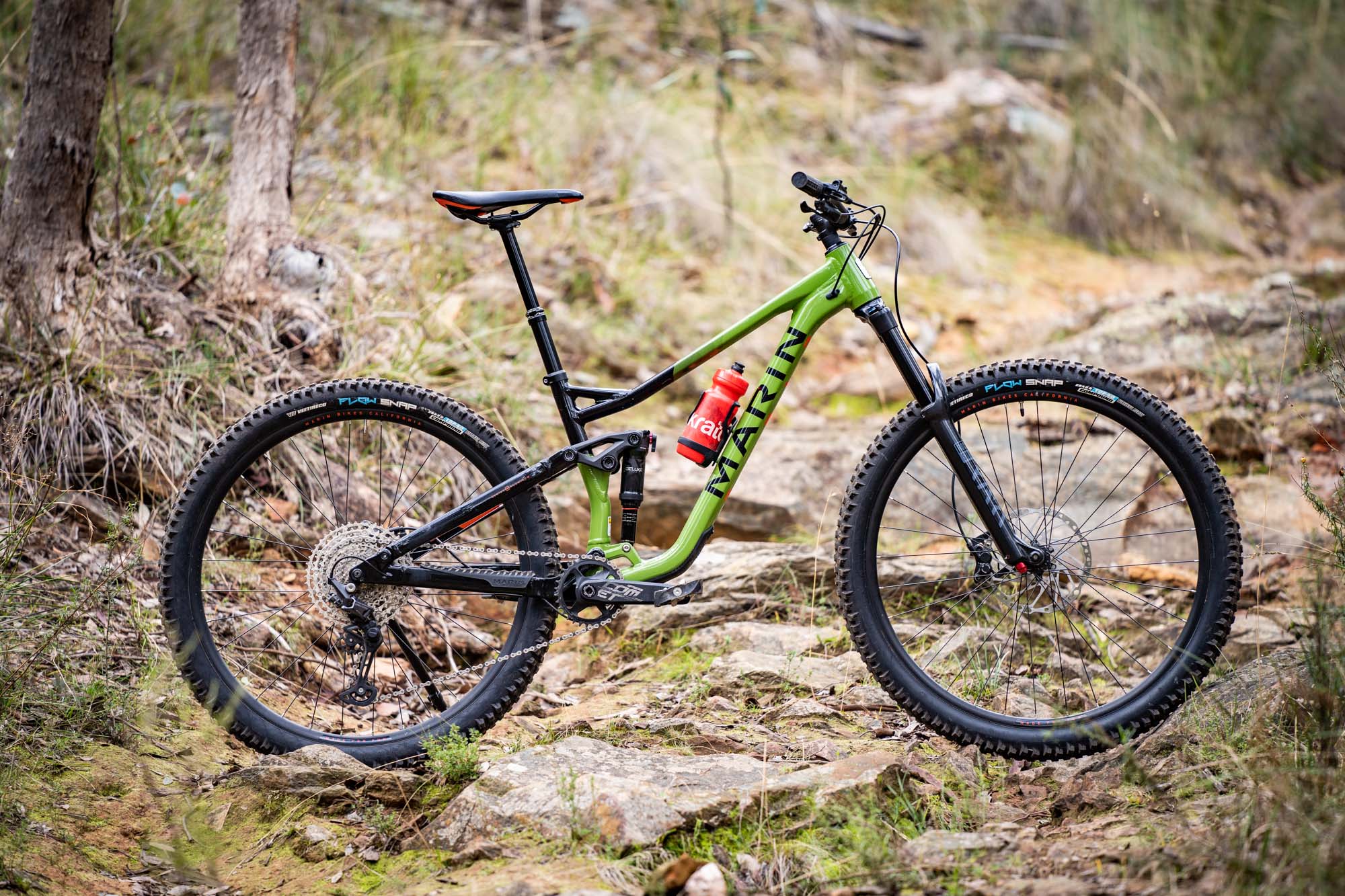
Marin Alpine Trail 7
Coming in below the $4,000 price barrier, the Marin Alpin Trail 7 is a stupendously capable bike for the money. Built around 150mm of rear travel and a 160mm fork, it’s one of those slightly shorter travel, but ready for shreddy steep and technical riding, bikes we mentioned at the top.
With a robust chassis and contemporary geometry paired with smooth and sorted suspension, it’s ready for hard-hitting descending and corner-ripping shenanigans. There’s is plenty of progression built into the rear suspension, so you can access all the travel, but it’s never obvious when you’ve run out.
The Alpine Trail 7 is for riders who prioritise getting down the mountain as fast as possible while being able to jump, jib and manual along the way. This is a bike that rewards and aggressive pilot on more demanding trails.
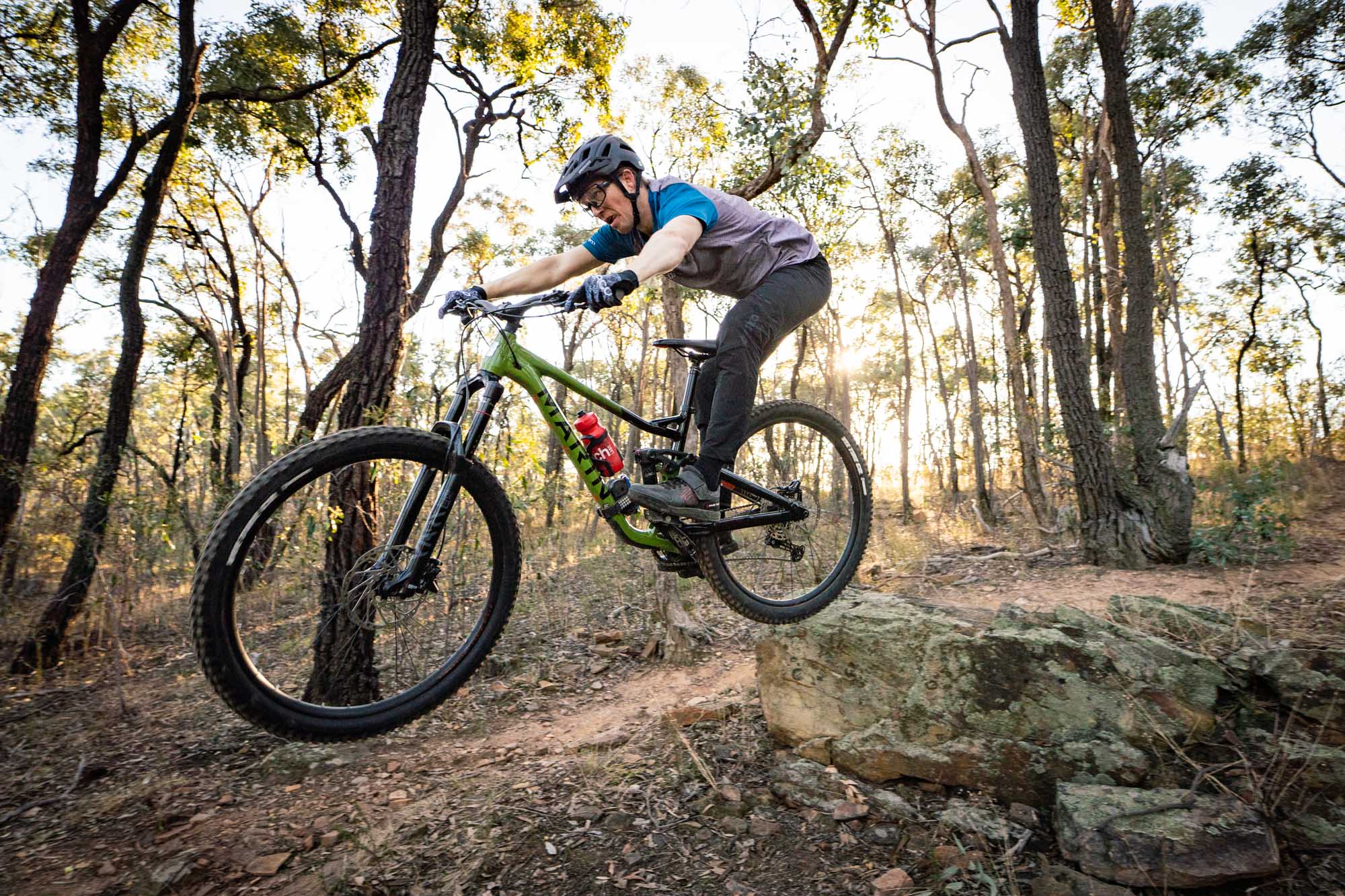
When things go back up, it’s not the sprightliest climber, and the rear end is active, which is a boon on crumbly surfaces and techy ascents. Thankfully there’s also a climb switch for when it’s time to put the watts down.
It’s not an all-day pedaller, but that’s not what it’s supposed to be, and there are other bikes in Marin’s range designed for that purpose. It’s gimmick-free, simple, well spec’d and a ball of fun to ride.
For more, read our full review of the Marin Alpine Trail 7.
Wrapping up
Enduro has absolutely exploded, and the bikes are becoming ever more capable and reliable — as is a requisite of the racing format. There was a time not all that long ago, there would be an audible groan at the proposition of going uphill aboard a slacked-out gravity rig, with 160mm+ of rear travel. Now these bikes can tackle terrifyingly steep, nasty and rough gravity trails, and then pedal back up to the top no problem.
Better still, brands are taking these big travel bruisers in a tonne of different directions — high pivot vs non-high pivot, mullet vs no-mullet, etc. — and rethinking every aspect of these bikes all in the pursuit of creating the best enduro platform. With that, this is not an exhaustive list, and there are plenty of bikes we’d love to test, like the Forbidden Dreadnought, Nukeproof Mega and the new Santa Cruz Nomad — we have that last one coming, so stay tuned.
And with that, we’re constantly reviewing bikes, and we’ll be updating this feature as we come across more bikes worthy of this list.
If there’s something you’d like to see, sing out in the comments and let us know.
